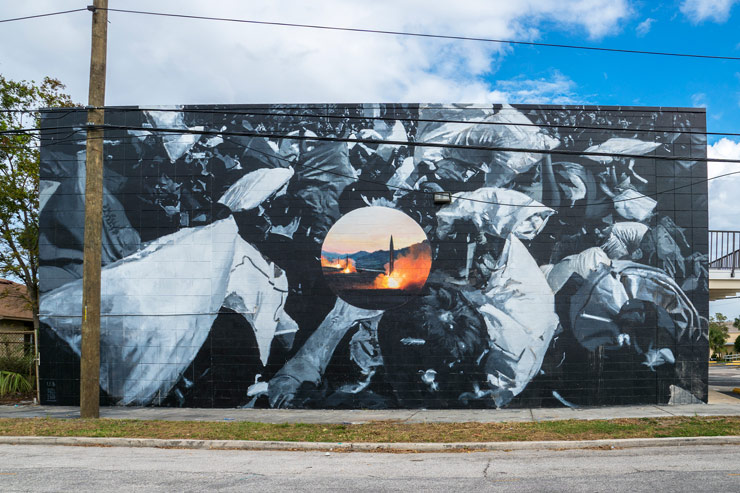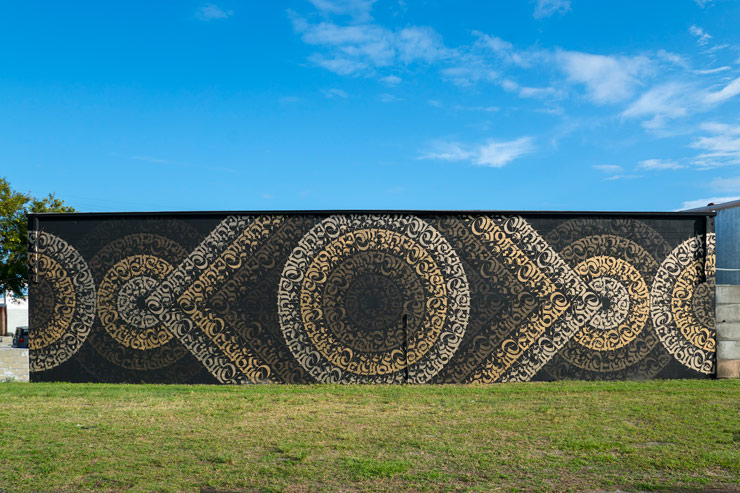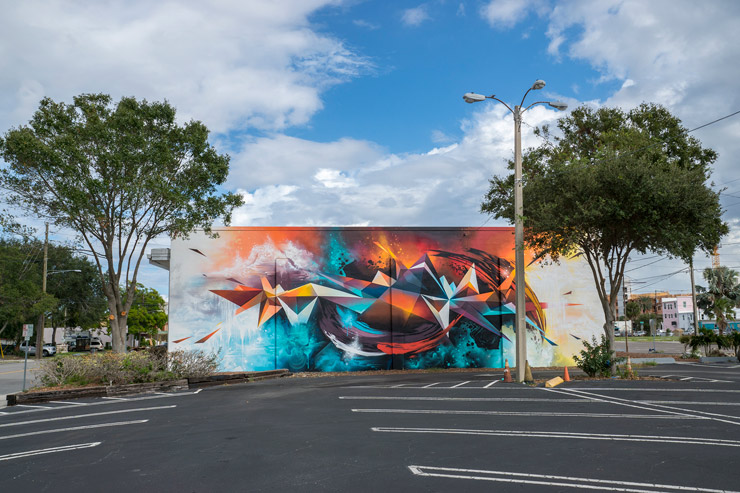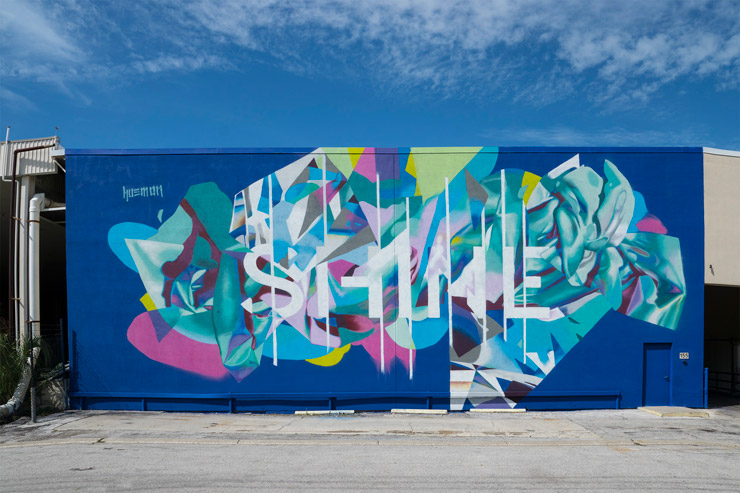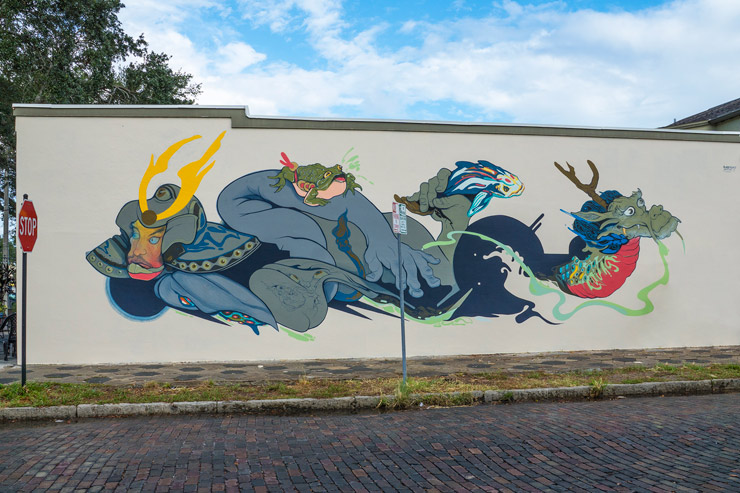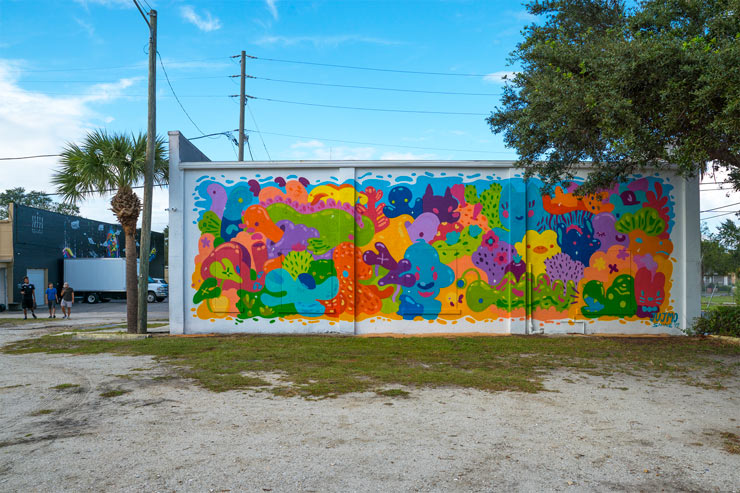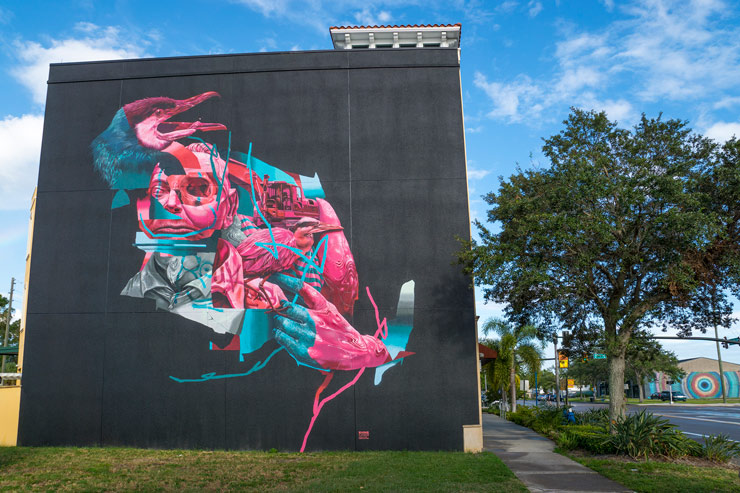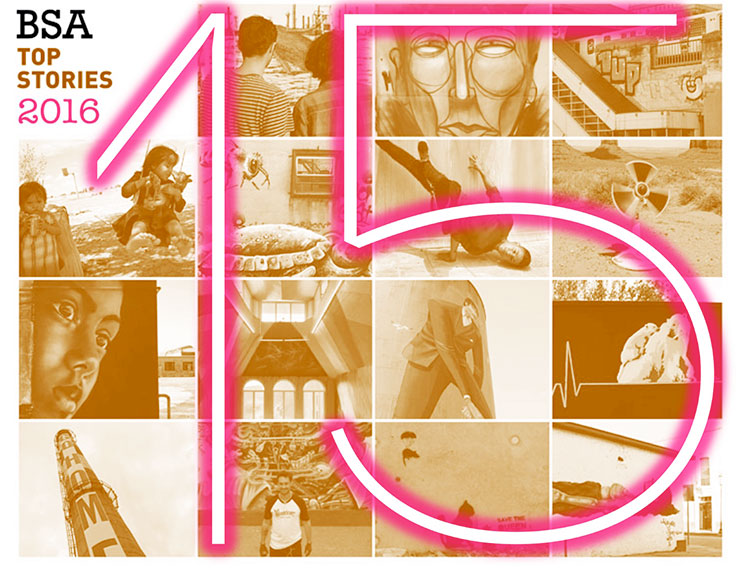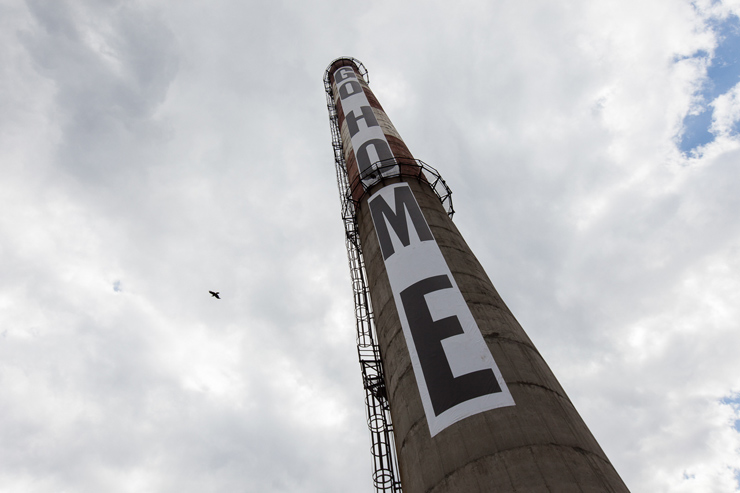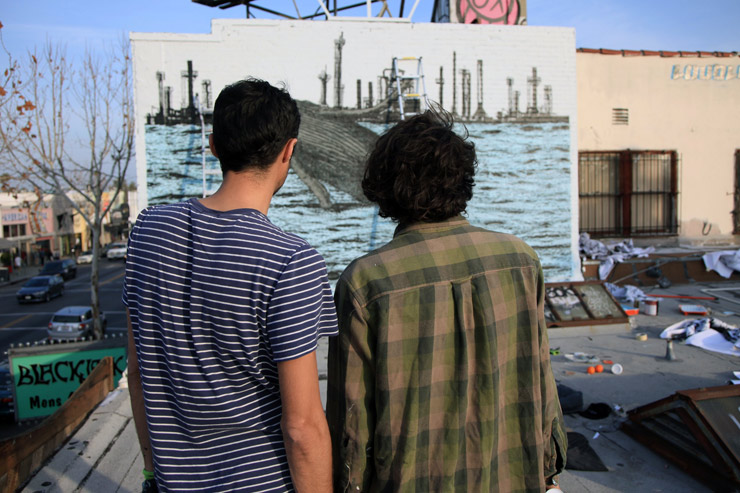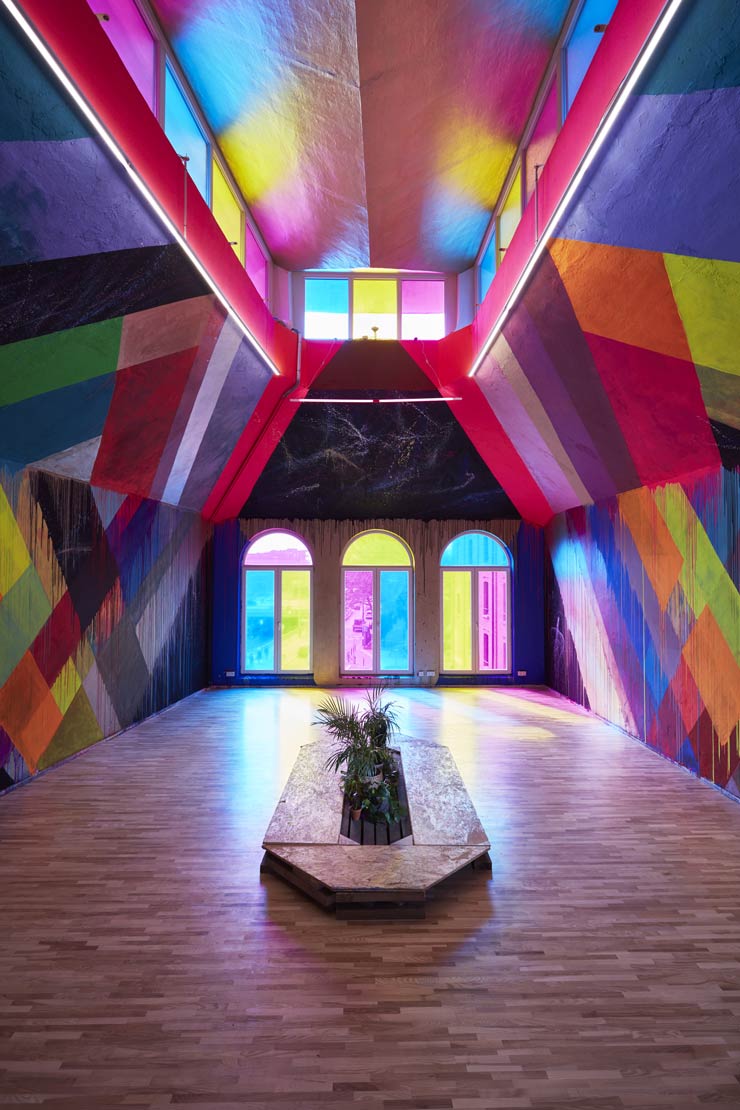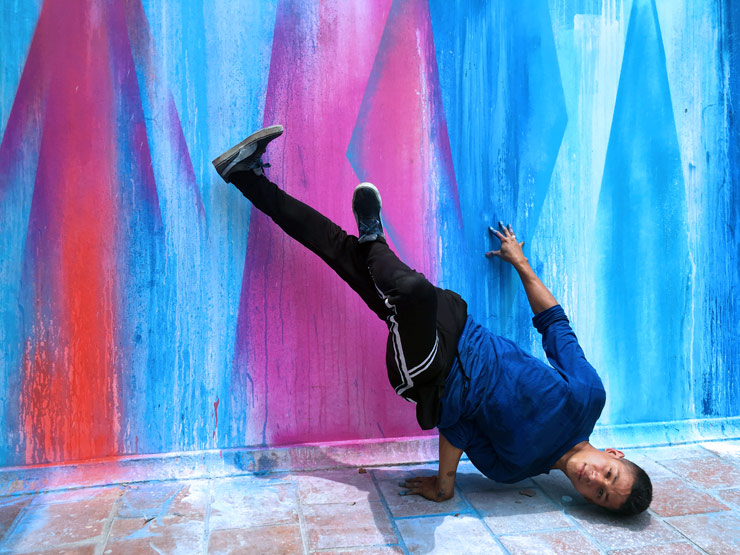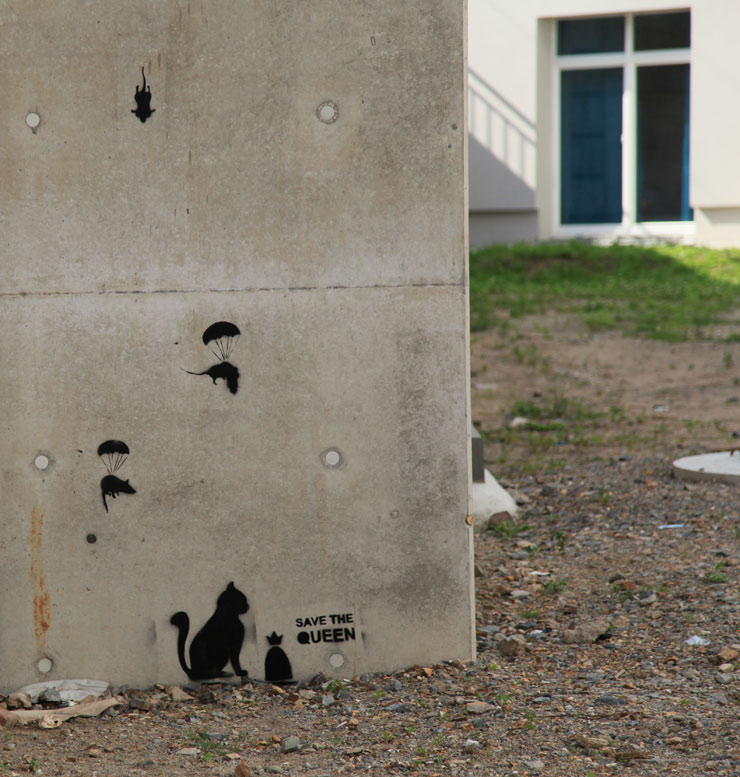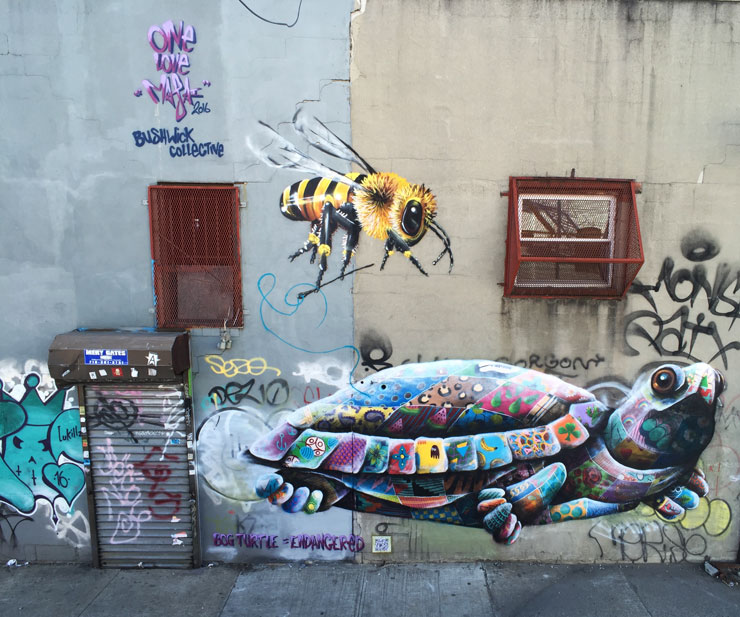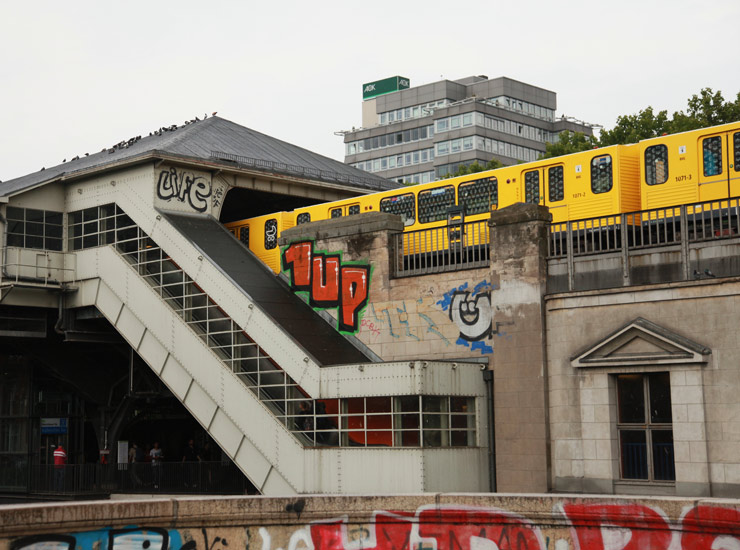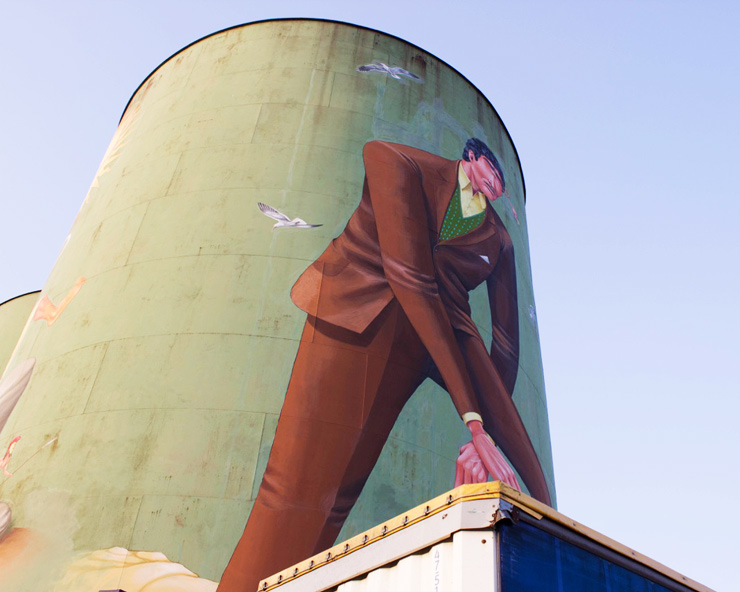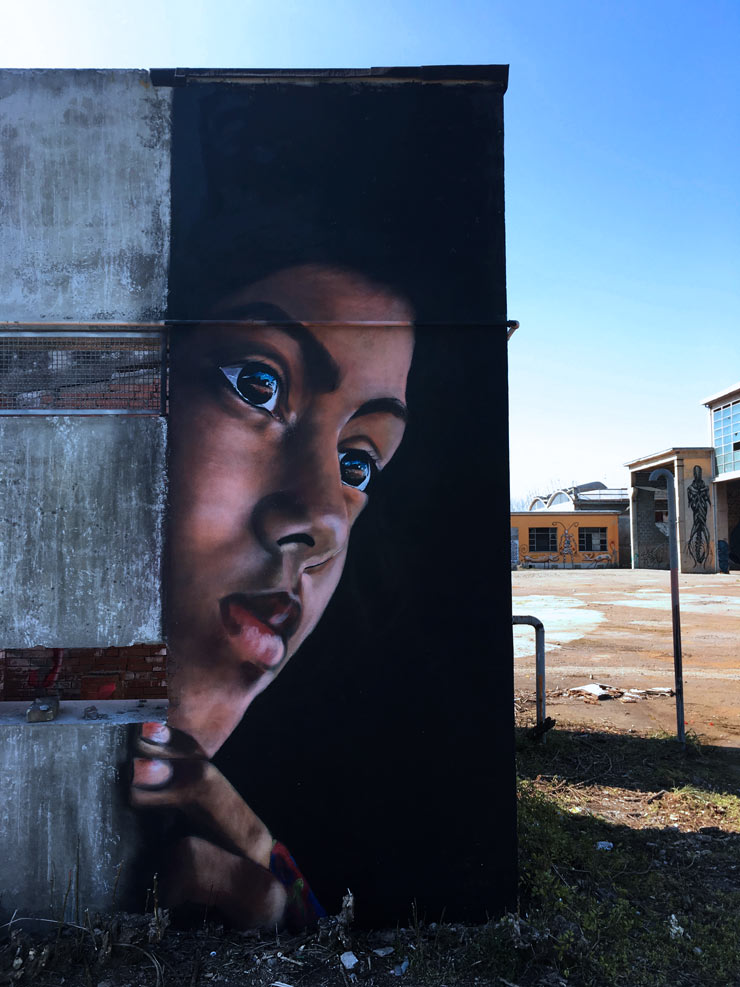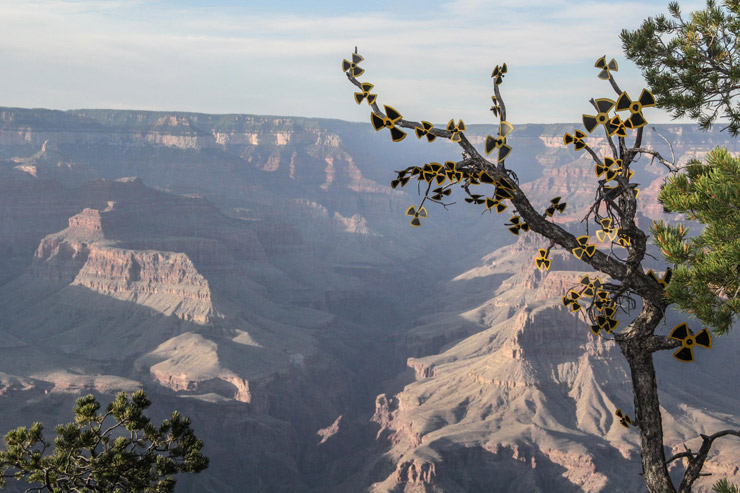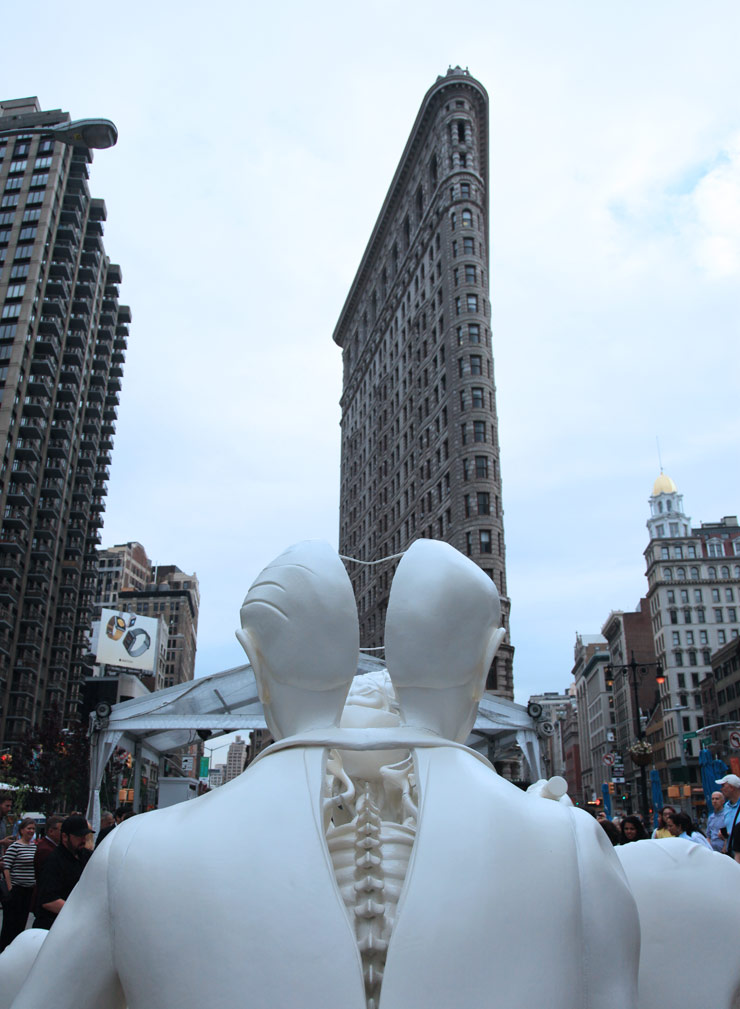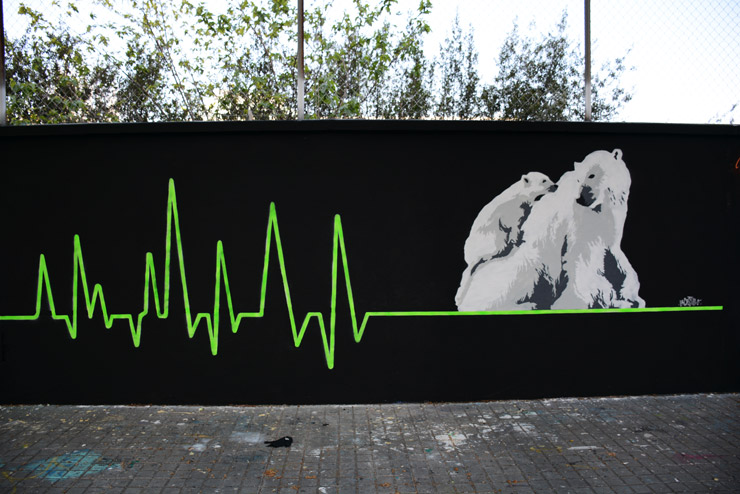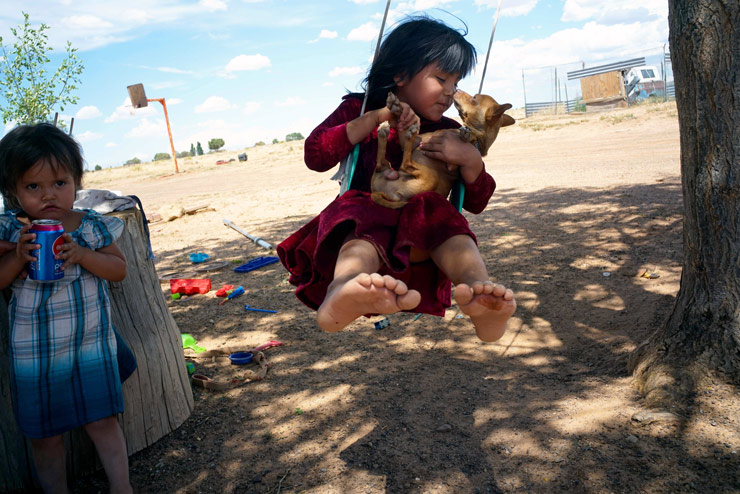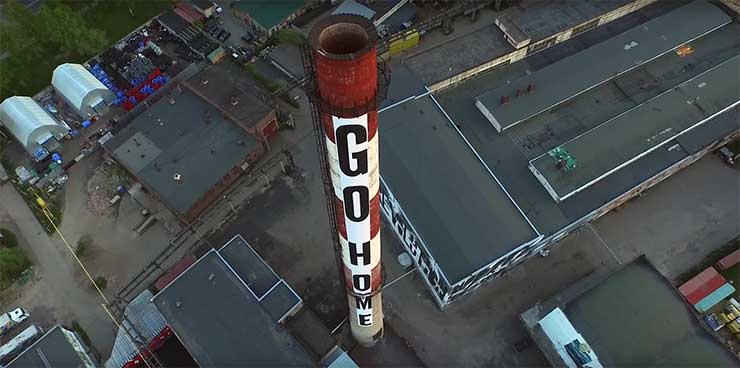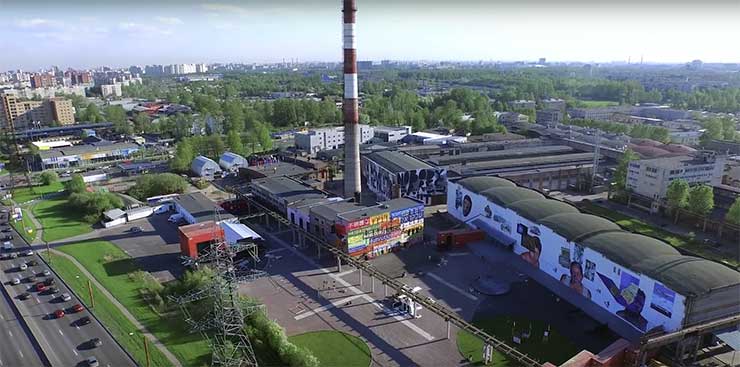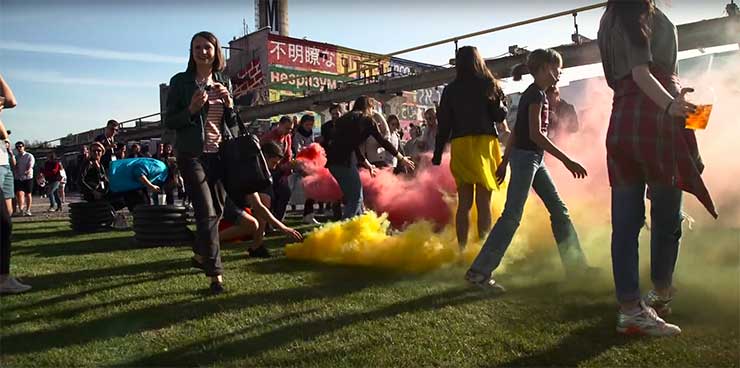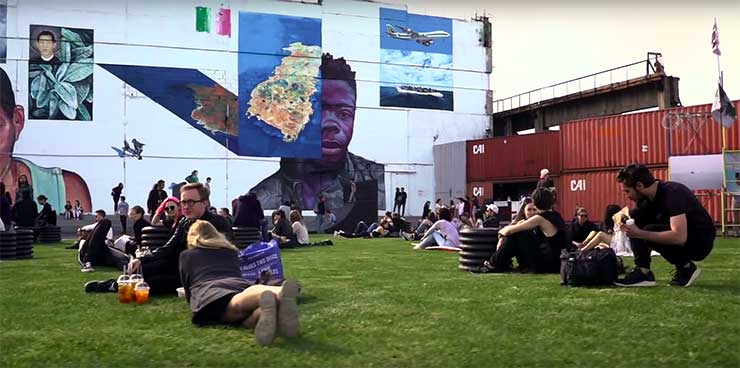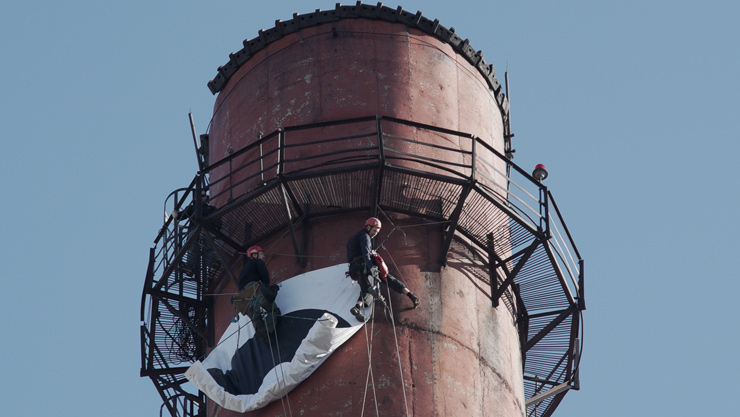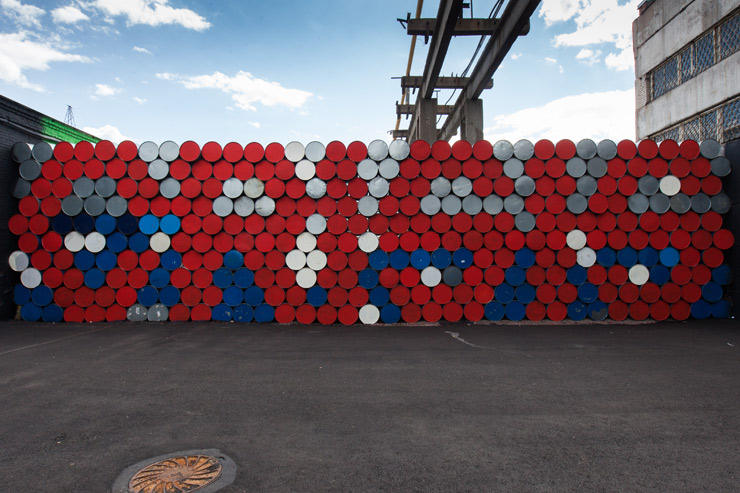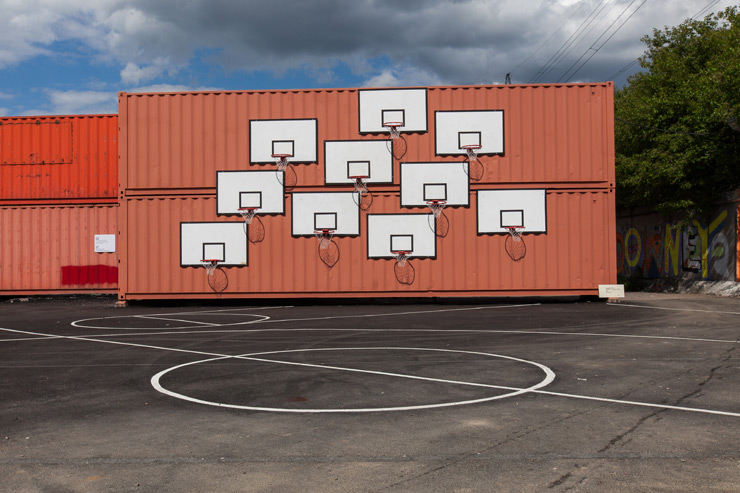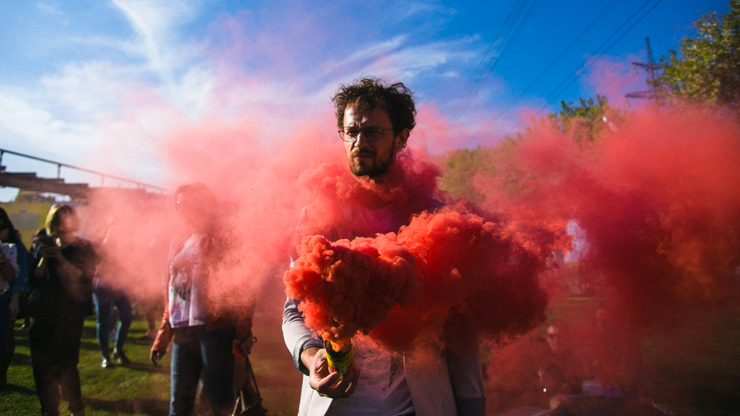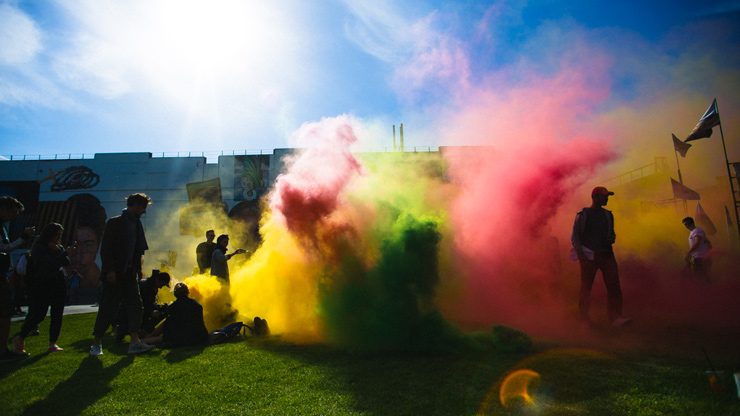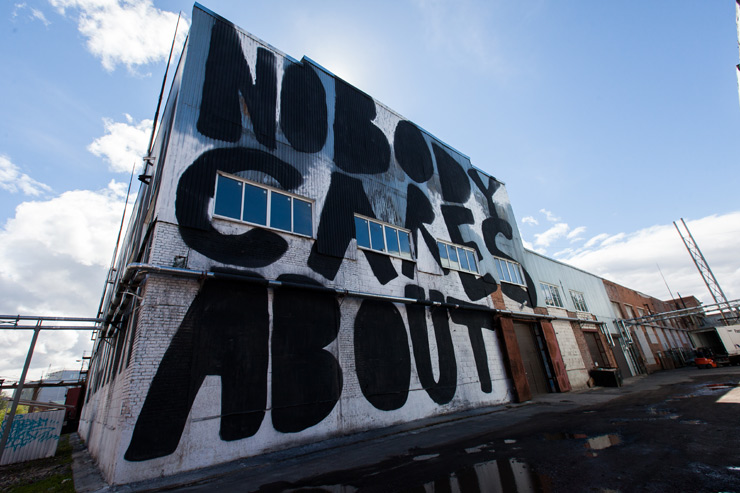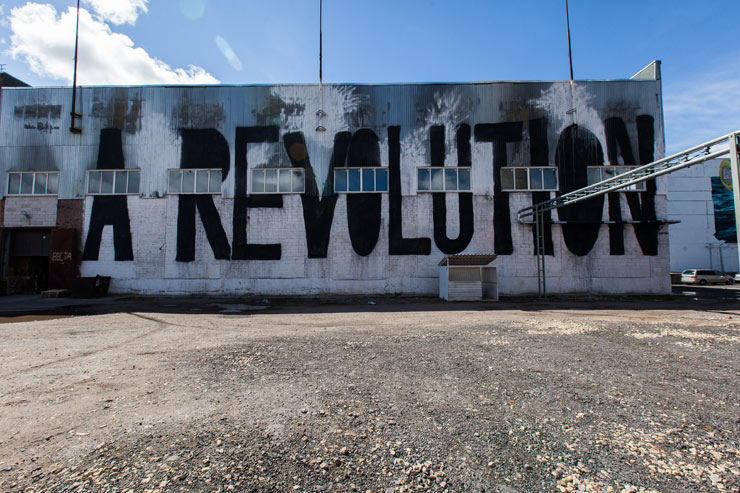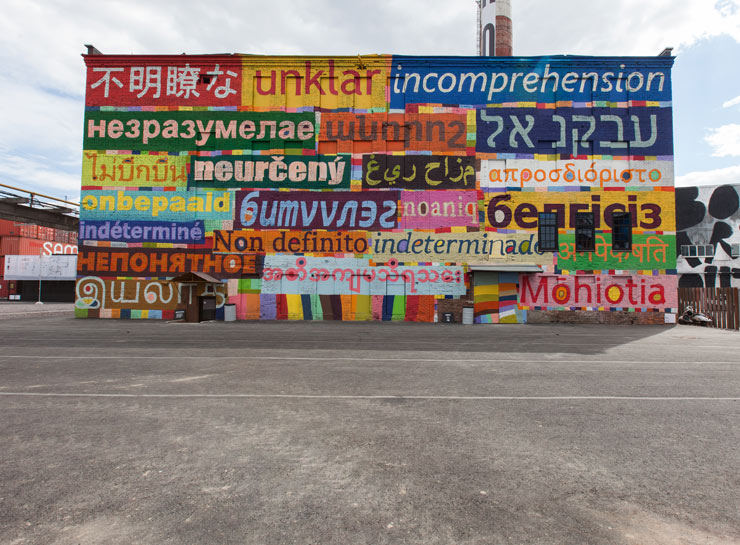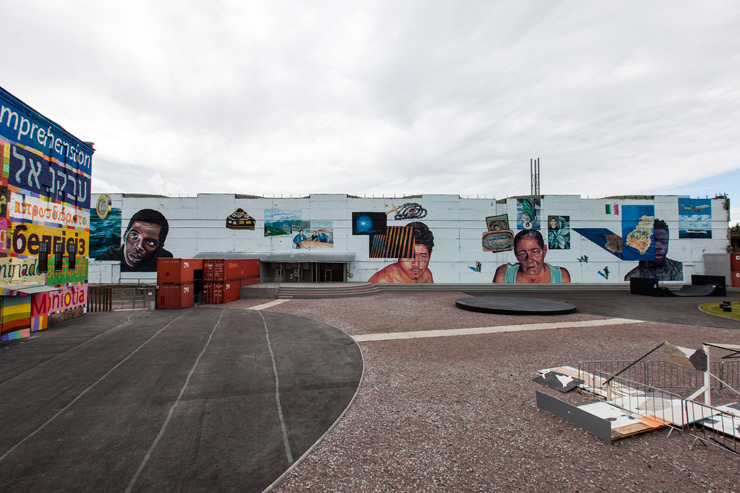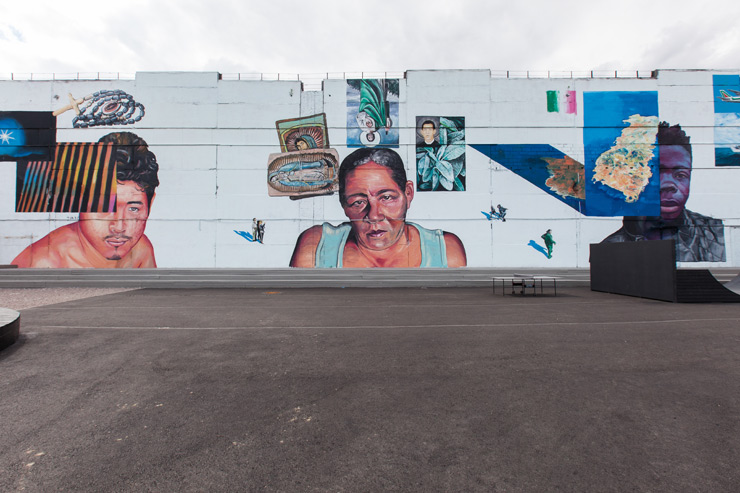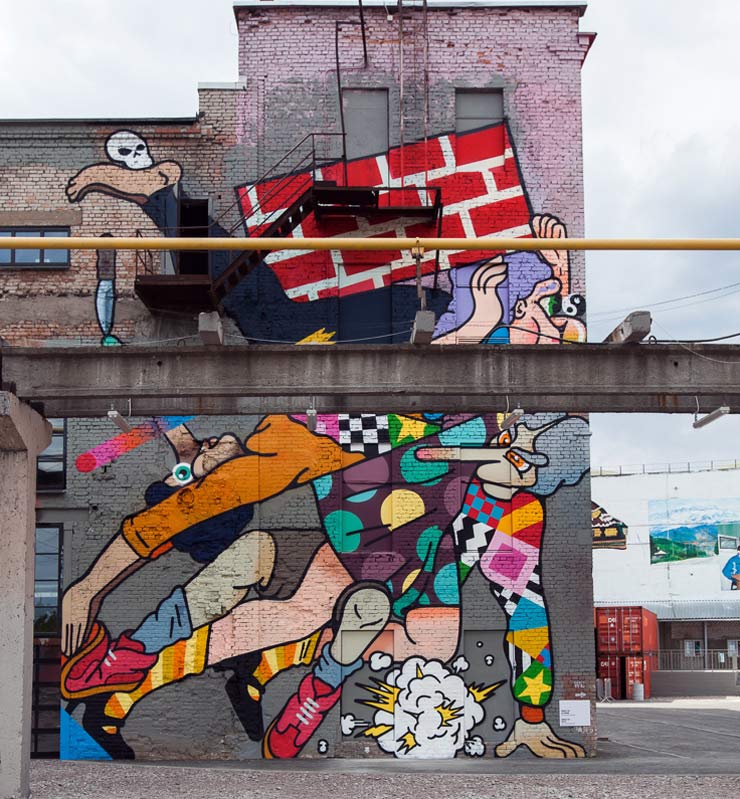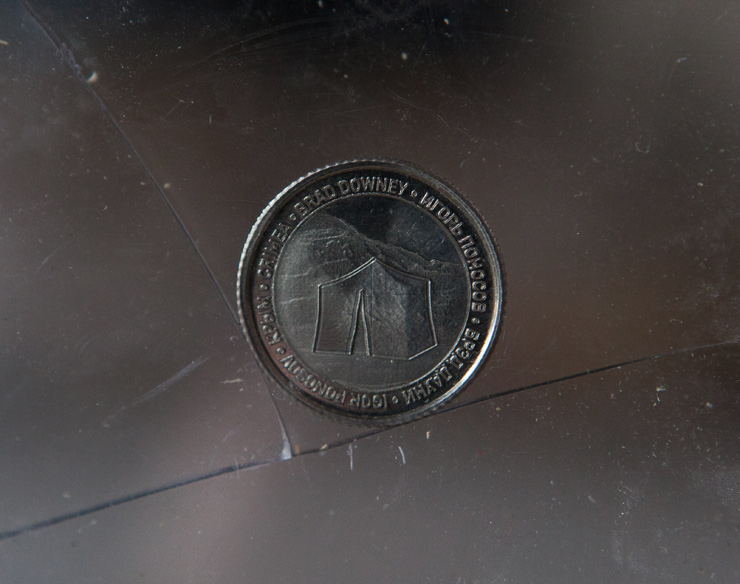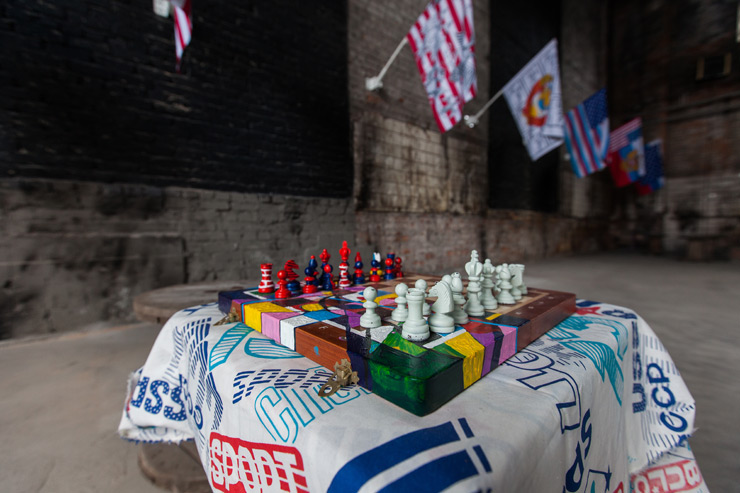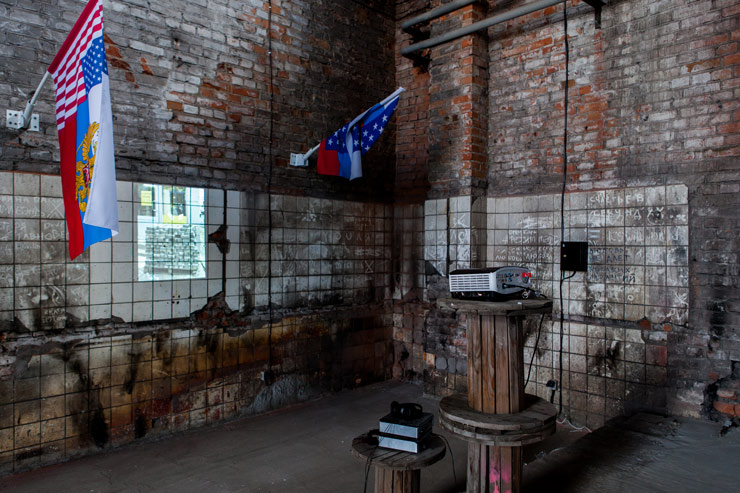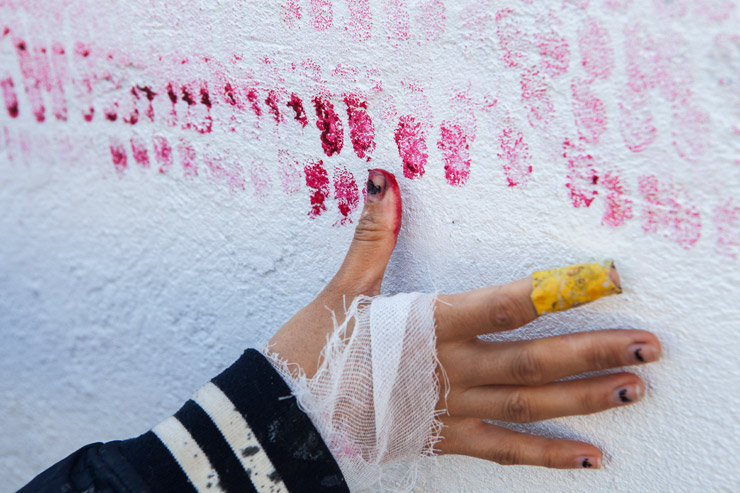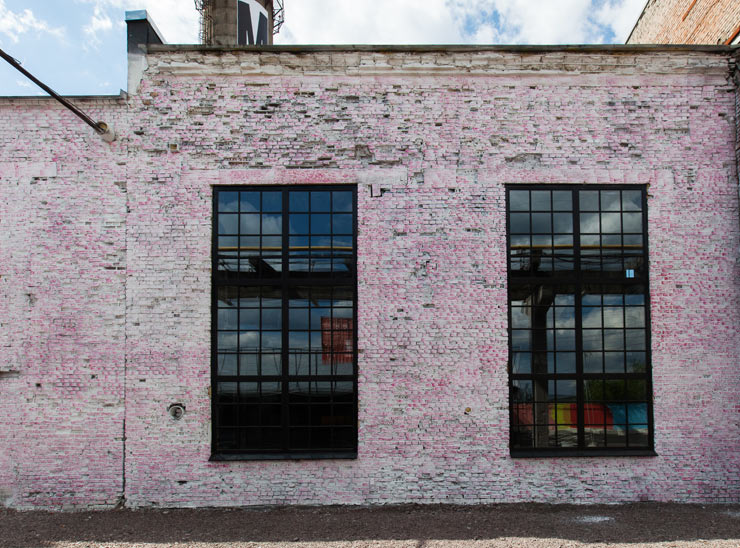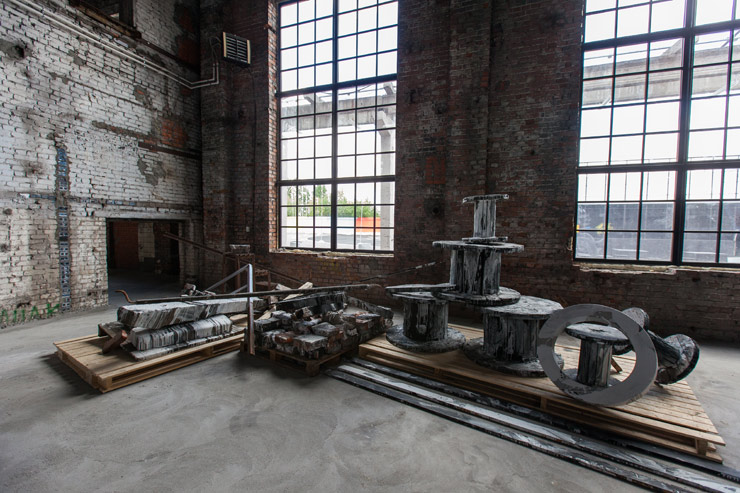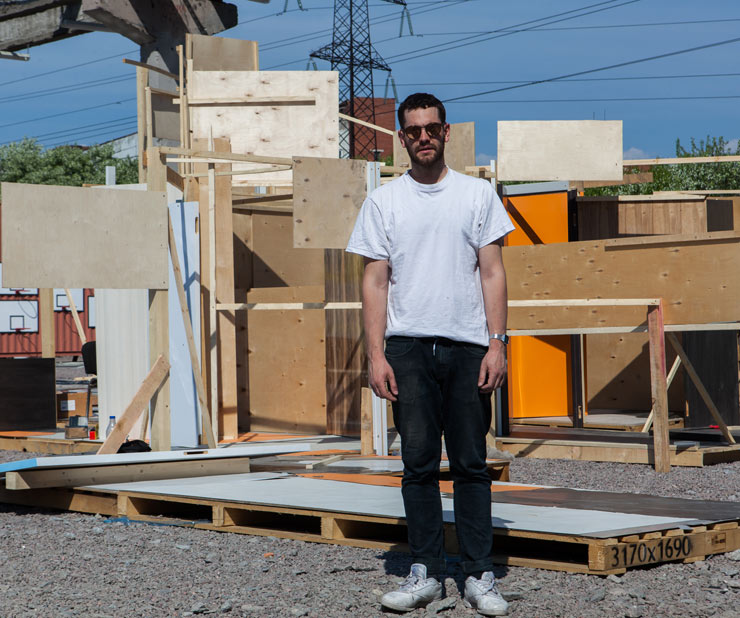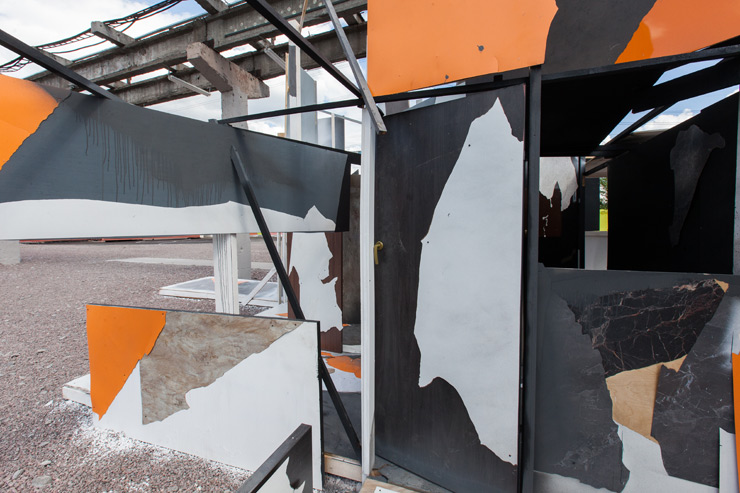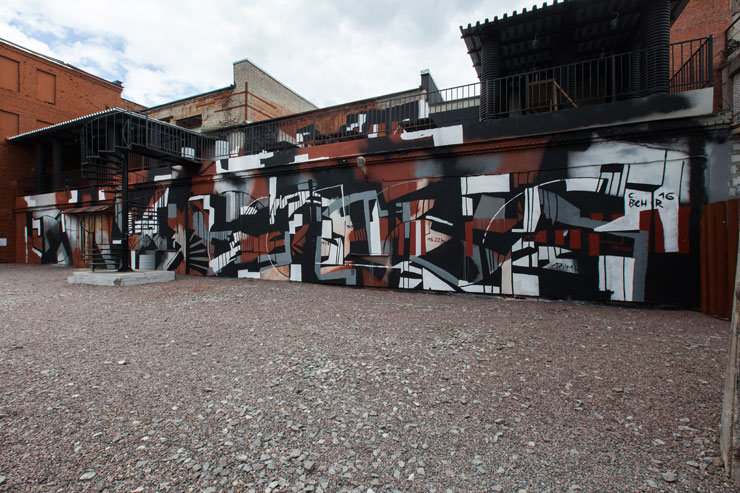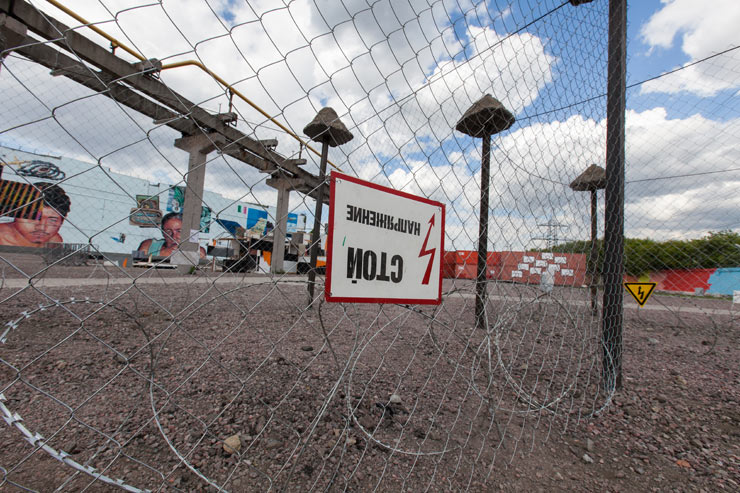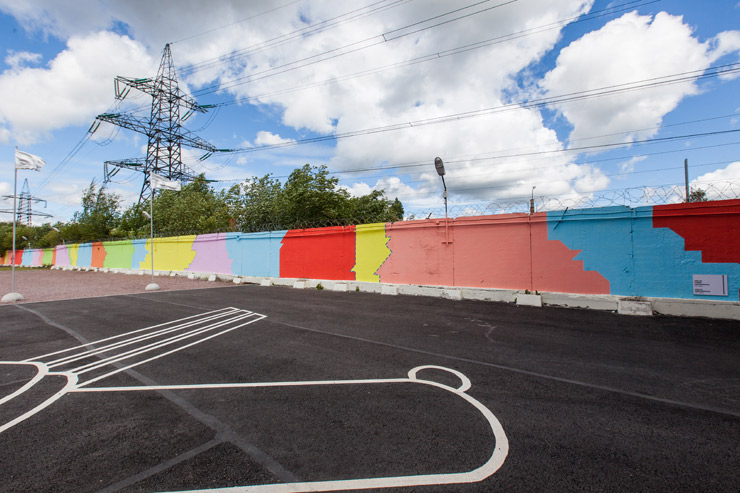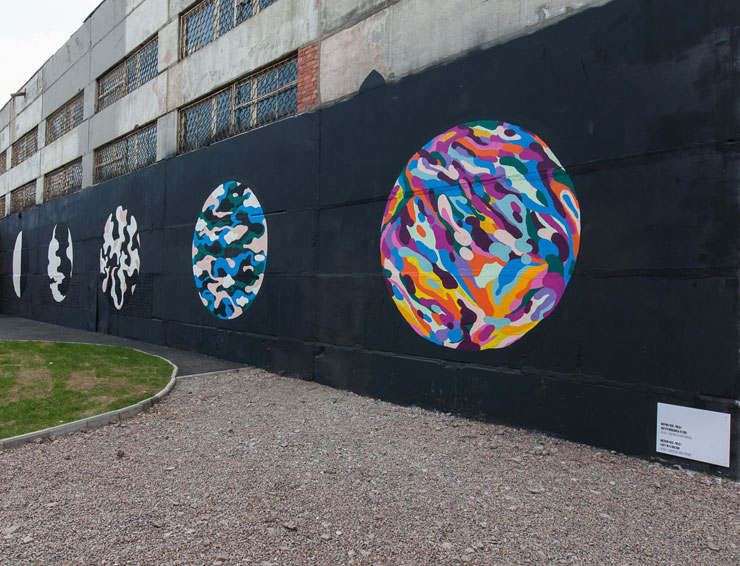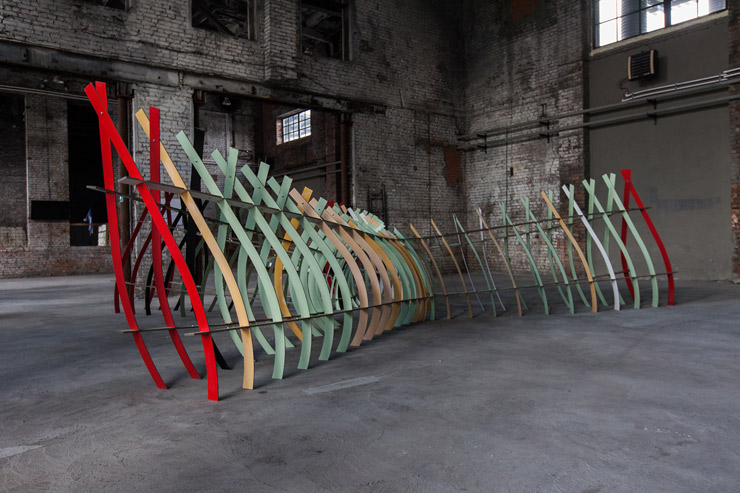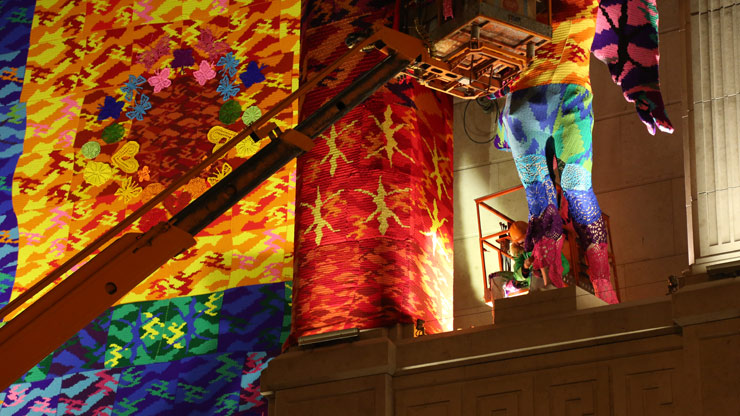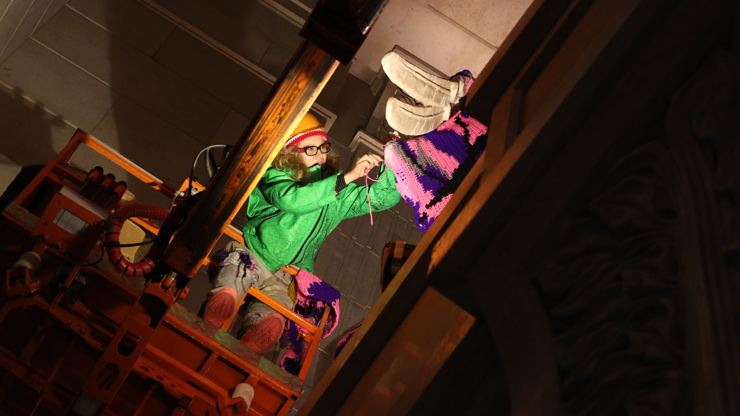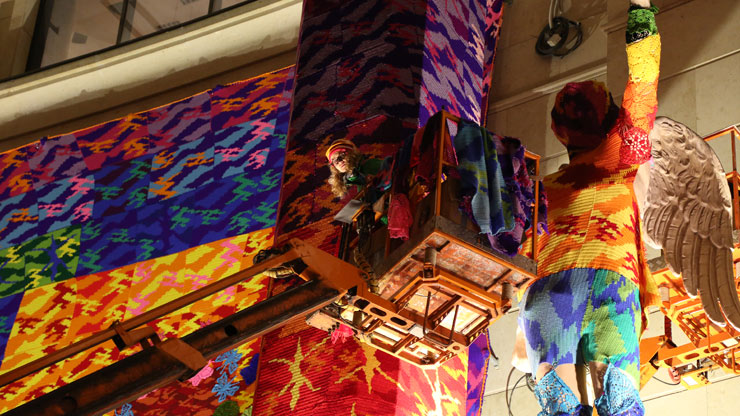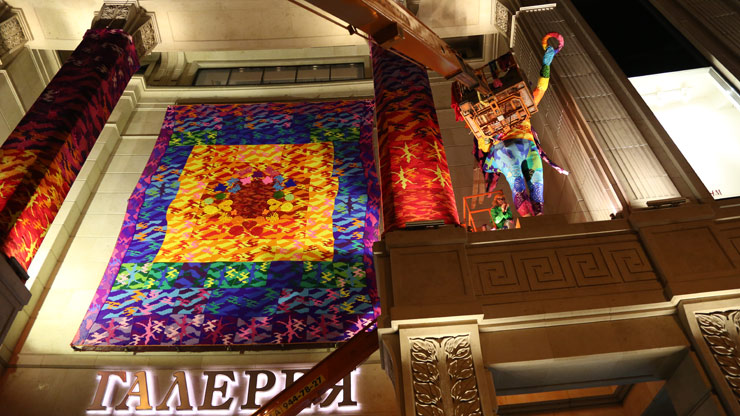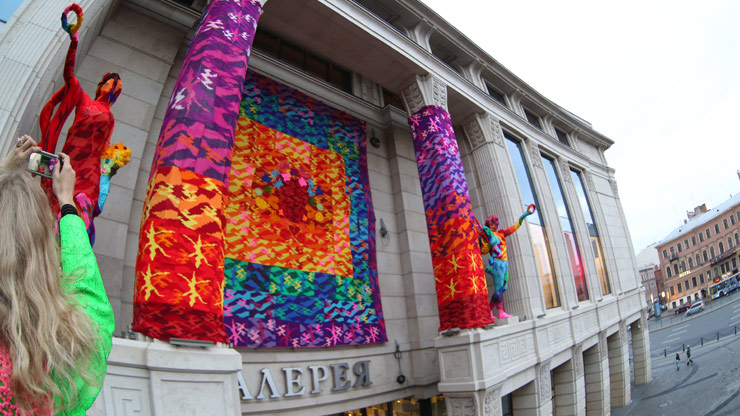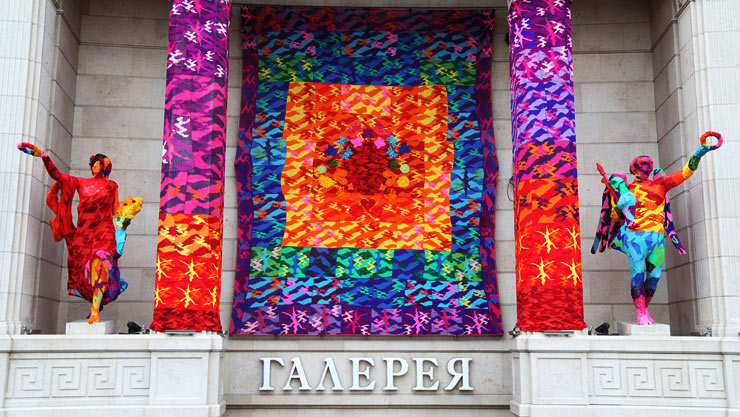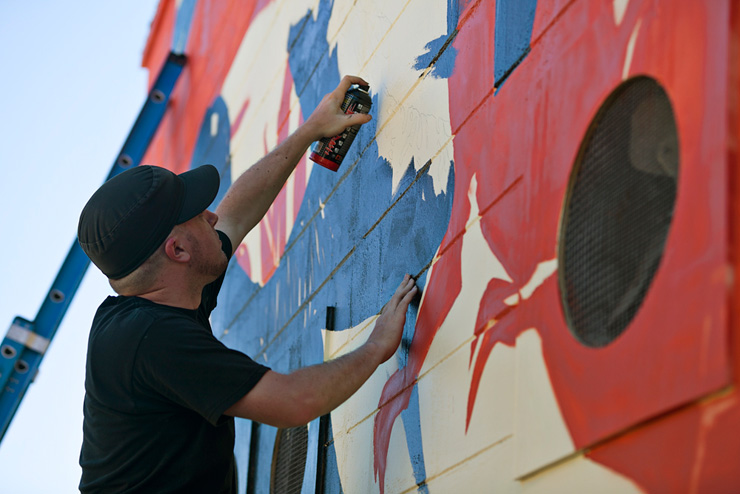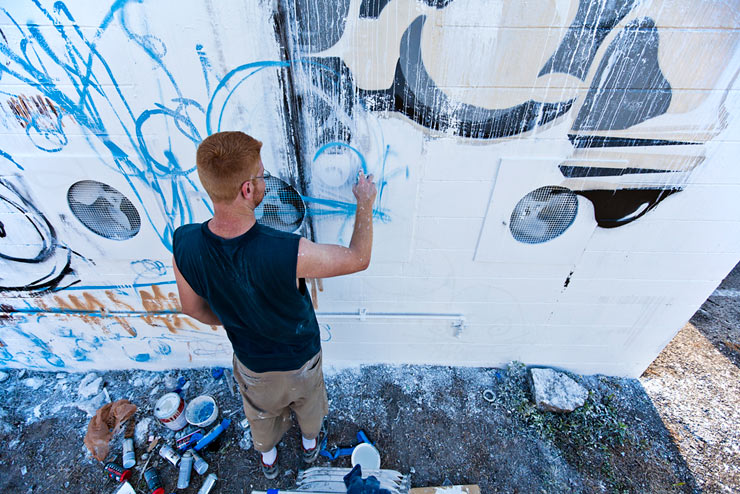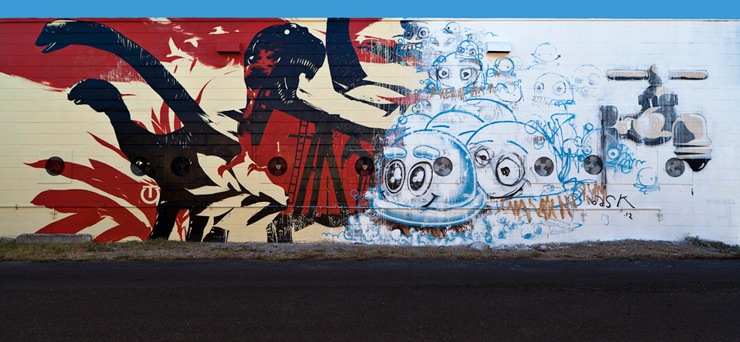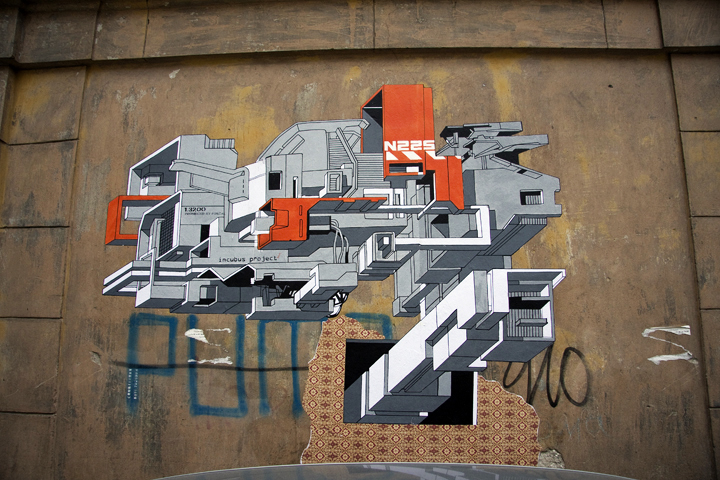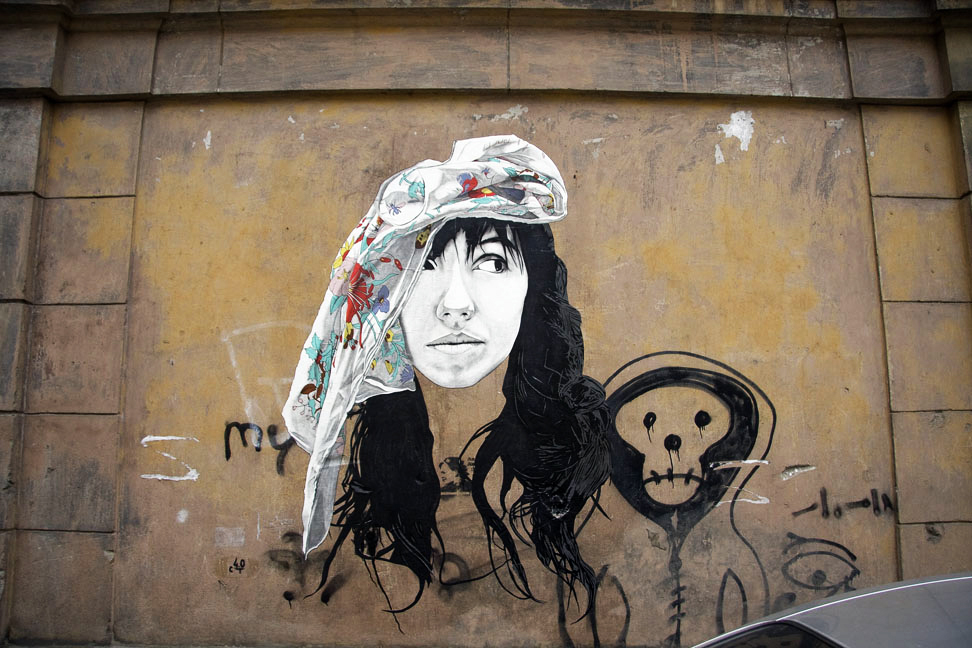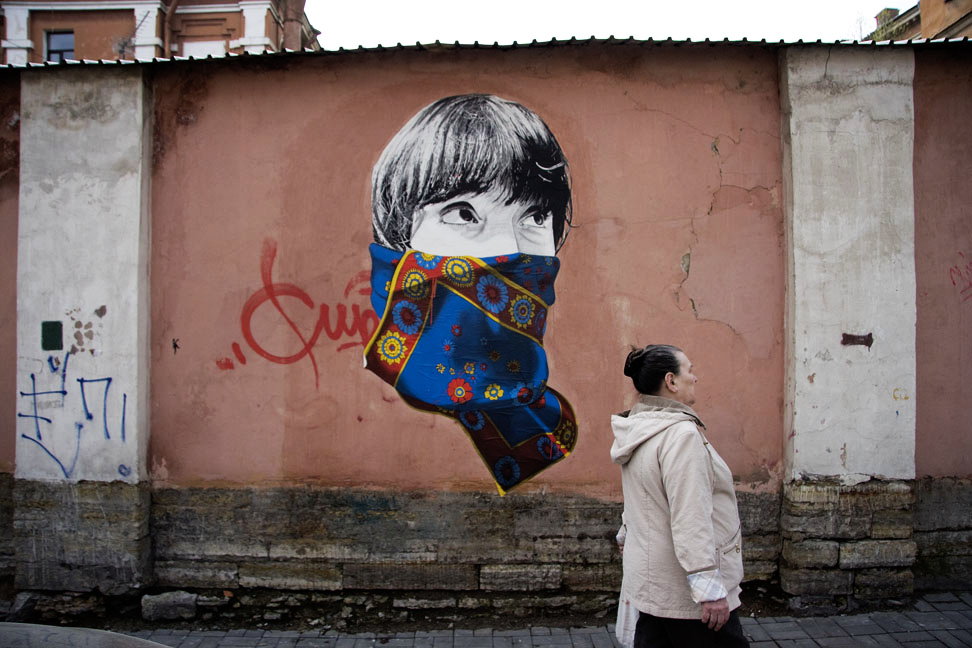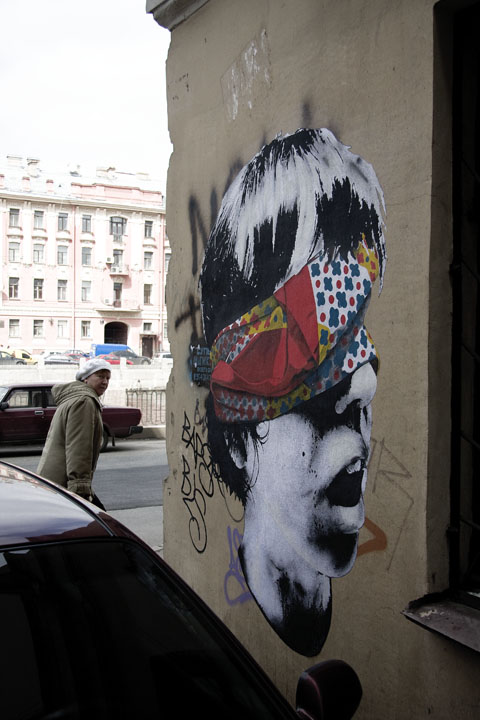2018 has been a good year for Street Art books, and your interest in the ones we have highlighted continues to assure us that “Print” is not dead. There is no better way to document a moment in this evolving scene for posterity than with the bound volume, and sometimes there is no better way to appreciate an artists work than to sit by a lamp or window with a book on your lap.
We know that you appreciate our daily analysis and efforts to elucidate and illustrate a fluid global Street Art/ graffiti / urban art scene here in digital, but we’re thrilled to give you solid options in book form as well. If you’re looking for a good quality art book to give this year, consider one of these hits from 2018. Enjoy!
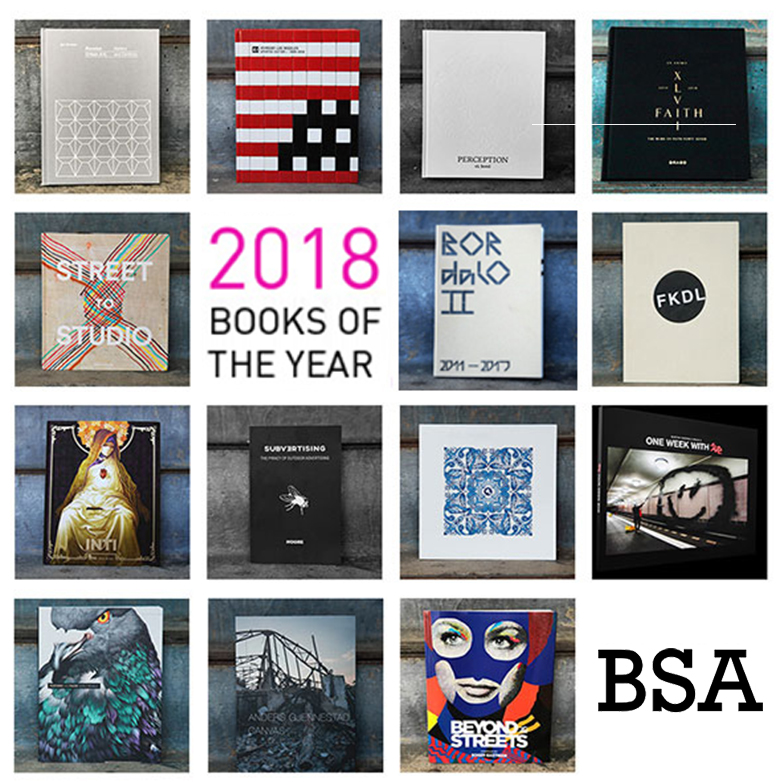
“Inti, Color, Carnaval y Resistencia”, INTI.
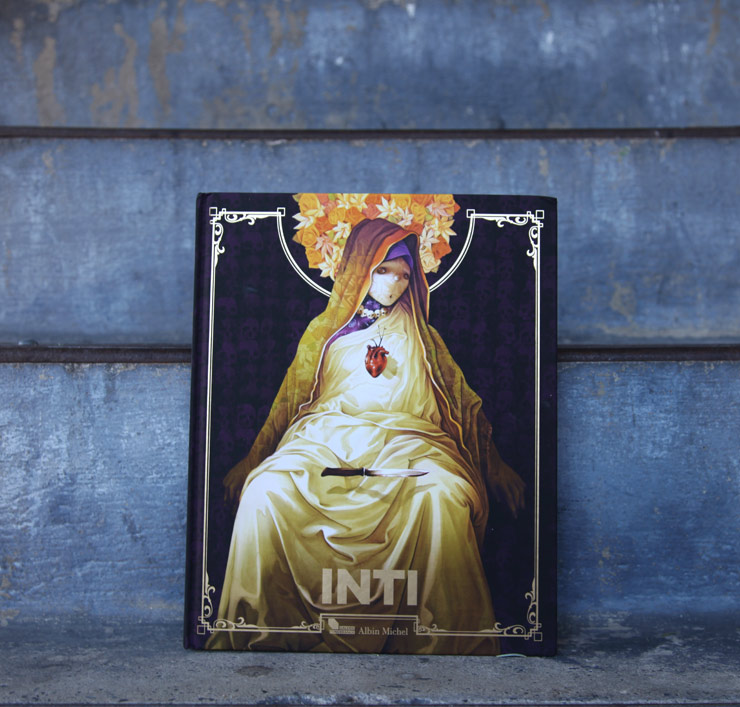
INTI Commands First Monograph : Color, Carnaval y Resistencia
From BSA:
“Certainties, simple explanations, last hopes, magic thoughts and fears. All of them confronted by what is evident.”
Thus describes the figure slung with bullets, holding a necklace with a cross and delicately balancing a small green apple on his index finger on a larger than life mural in Santiago, Chili. The visual language of this graffiti/Street Artist and muralist named Inti is his to wield, a cosmic folk expression that glows with celestial waves surrounding an other-worldly race of characters.
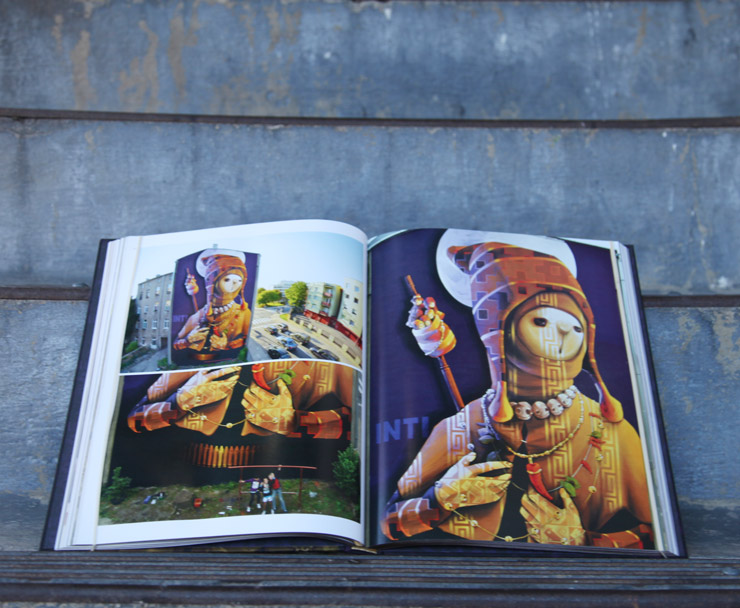
INTI. Éditions Albin Michel, 2017. Paris, France. Click HERE for more about this book.
Bordallo II: Bordallo II / 2011 – 2011
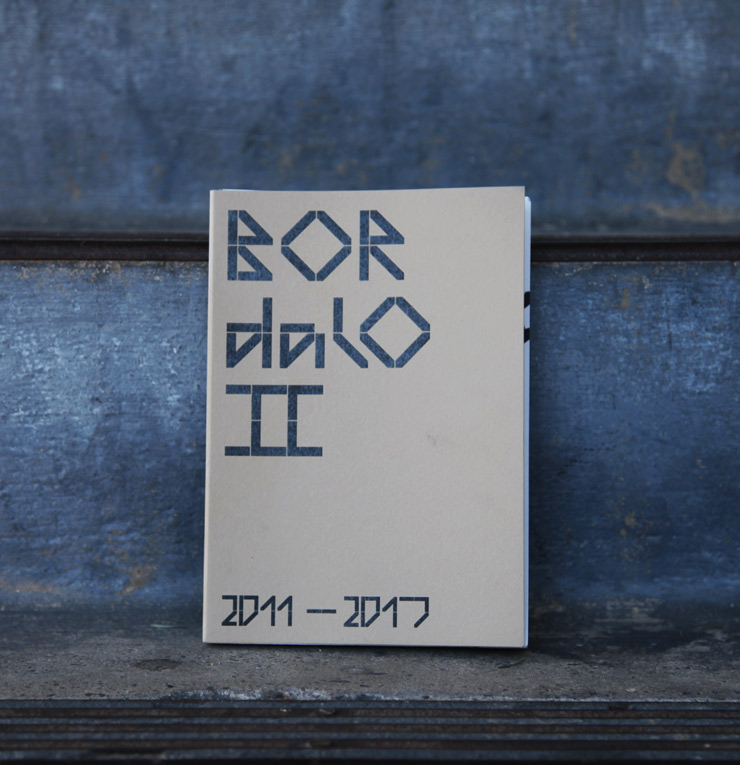
From BSA:
Such is the splendid stuff of dreams and discovery for Bordalo II, the Lisbon-based Street Artist and maker of garbage relief animal portraits in cities across the world.
These are the things that when arranged on shelves and placed in relation to a floor plan, within parameters and boundaries of our mundanity, will comprise a perfect environment of domesticity; full of memory, associative emotion, symmetry. Objects, materials melted and poured, carved and plain, screwed and snapped, polished and sprayed, emulsified, inset, extruded, coiled, soldiered, plated, woven. These dimensional collections of matter matter to us. Metal alloy. Plastic polymer. Blown glass. Rubber, copper, steel, bakelite, particle board, glue.
Disarrange. You create chaos, disruption, disunity, discontent. Arrange again and create a muskrat, a buck deer, a petulant parakeet, an undulant octopus.
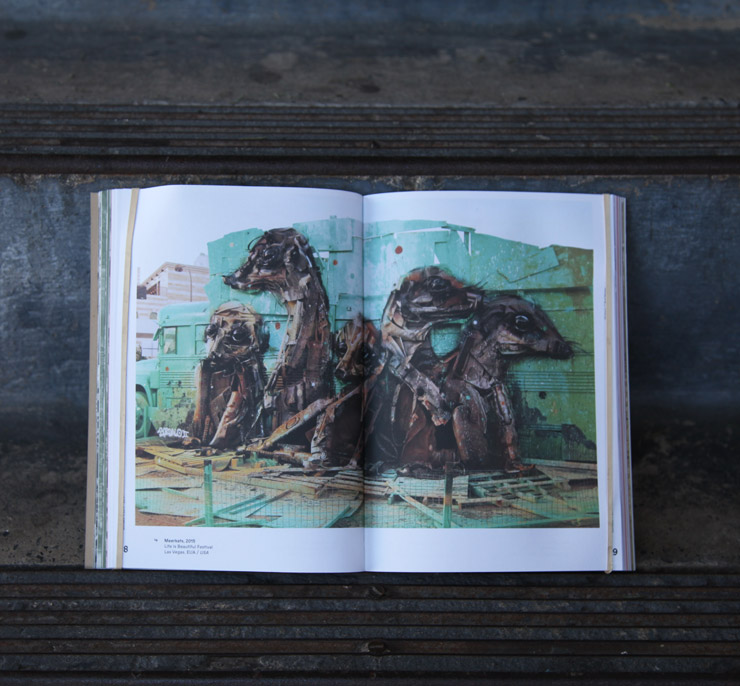
Bordalo II 2011 – 2017. Editor & Publisher Bordalo II. In conjunction with ATTERO and exhibition by Bordalo II held in Lisbon. November, 2017. Lisbon, Portugal. Click HERE for more about this book.
Subvertising: The Piracy Of Outdoor Advertising
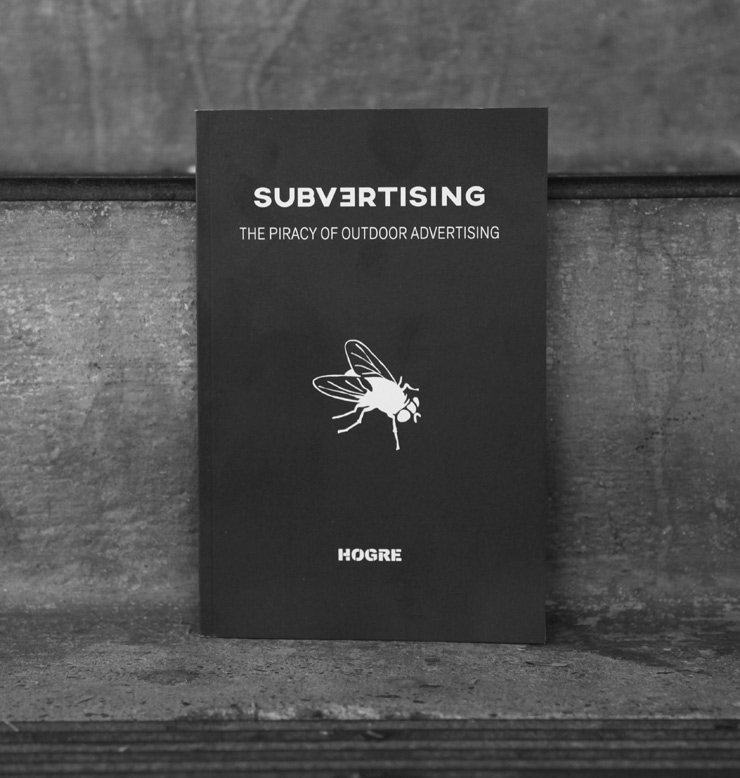
From BSA:
“The constant imposition of advertising in front of our eyes is an oppressive, dictatorial and violent act,” posits the artist, activist, and author Hogre in this new collection of works and words called Subvertising : The Piracy of Outdoor Advertising.
It sounds rather extreme when put this way, but perhaps that is the dulling power of advertising’s omnipresence in public space year after year. Each of us can certainly recall a time when there seemed like there was more open public space and fewer images and graphics and text telling us what to do, what to buy, who to hate, how to behave. Artists like Hogre are sounding the warning on our ability to recognize its power over our perceptions.
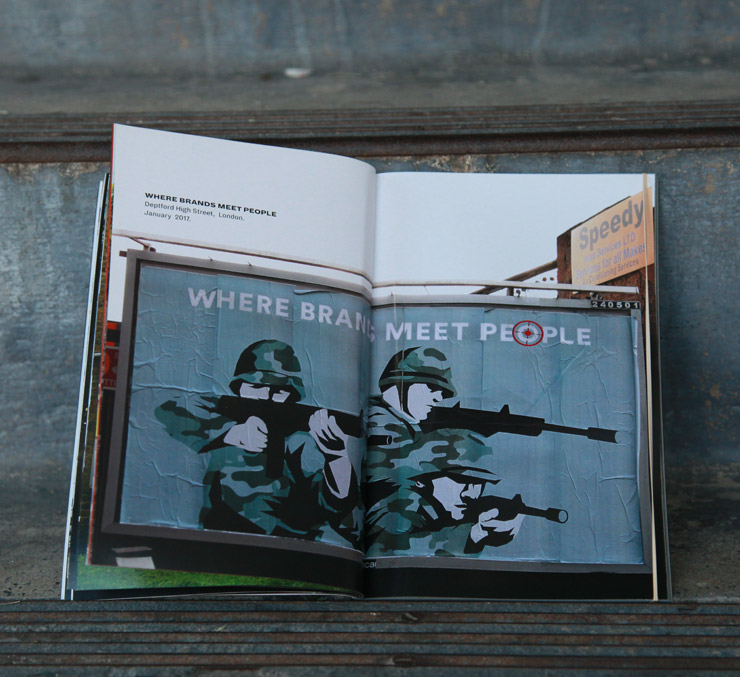
HOGRE. Subvertising: The Piracy Of Outdoor Advertising. Dog Section Press. London, 2017. Click HERE for more about this book.
“Add/Fuel -1- Monograph”, Diogo Machado AKA Add Fuel.
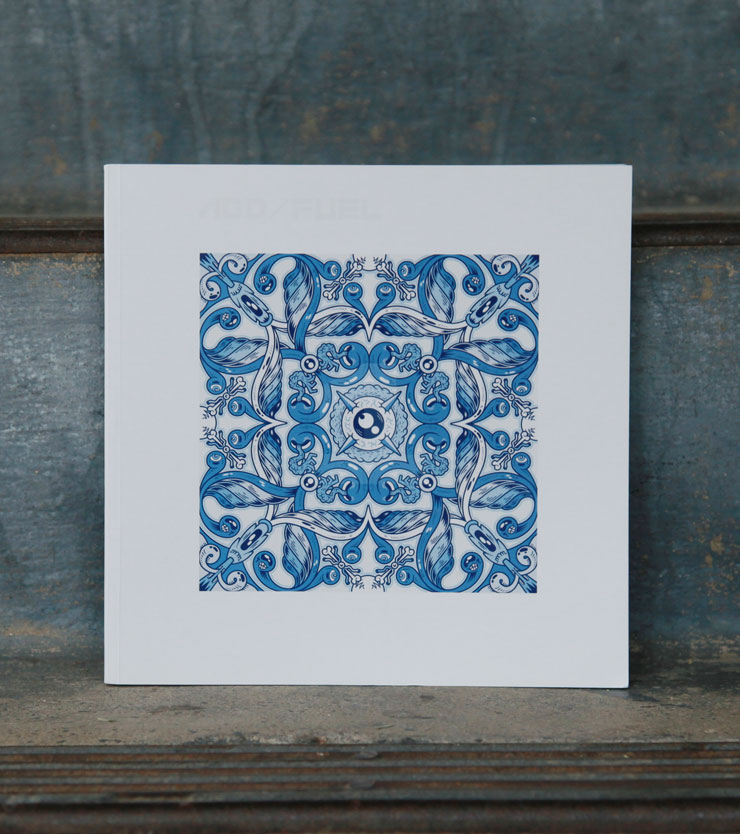
From BSA:
Add Fuel Reimagines Azulejo in His First Monograph
Via his own pop-culture interpretation of the interlocking curvilinear, geometric and graphic motifs, the Portuguese artist is firing new pieces daily in the kiln of his studio in Cascais. For a decade or so his interpretations of the tin-glazed ceramic tilework have been appearing on inordinate secondary city skins in the paths of pedestrians: visual illusions meant to appear as layers of urban bark peeling back from surfaces you take for granted to reveal heritage, history, artisanship.
While the interiors and exteriors of churches, palaces, schools and subway stations are covered with azulejos in Lisbon, thanks to Add Fuel (Diogo Machado) they have travelled to other cities and cultures as well. Each time he is attracted to the tile-making traditions locally, and he often incorporates his study of these new histories as well.
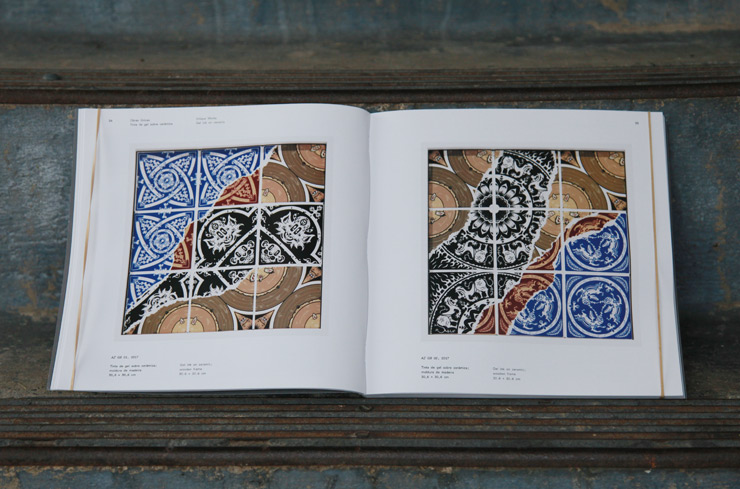
Add / Fuel – 1 – Monograph. Published by Diogo Machado. Portugal 2018. Click HERE for more about this book.
One Week With 1UP : Martha Cooper & Ninja K
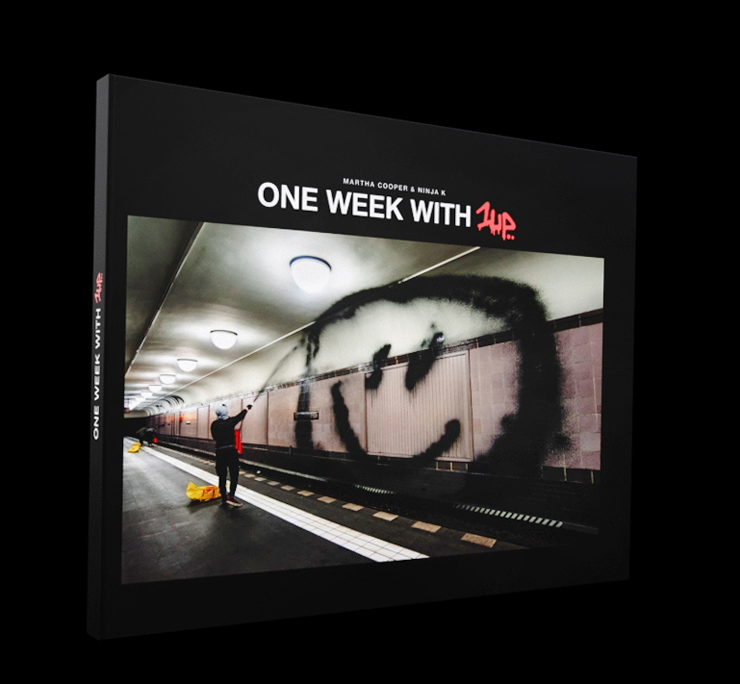
From BSA:
A serendipitous meeting somewhere in Berlin set this project in motion, and the results unveil an adrenaline fueled ride that always pushes, often exceeds the boundaries of physical safety and social acceptance while simultaneously thrilling graffiti fans and pissing off some public officials and property owners.
A new book captures the nature of the actions and adds to our conversations about art, vandalism, branding, public/personal space and its radical visual disruption. It’s a story made all the more remarkable during an increasing level of surveillance in a city that has basically embraced the bohemian and rebellious types who have transformed large parts of its cityscape, making Berlin a de facto capital of subculture, especially among the young.
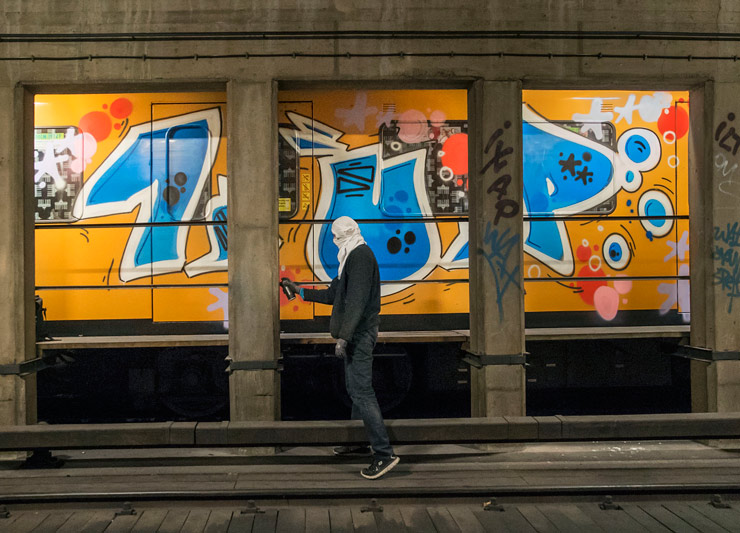
Martha Cooper & Ninja K. One Week With 1UP. (photo courtesy of the team) Click HERE for more about this book.
“Beyond The Streets” Exhibition : Gastman’s Train Pulls In to LA
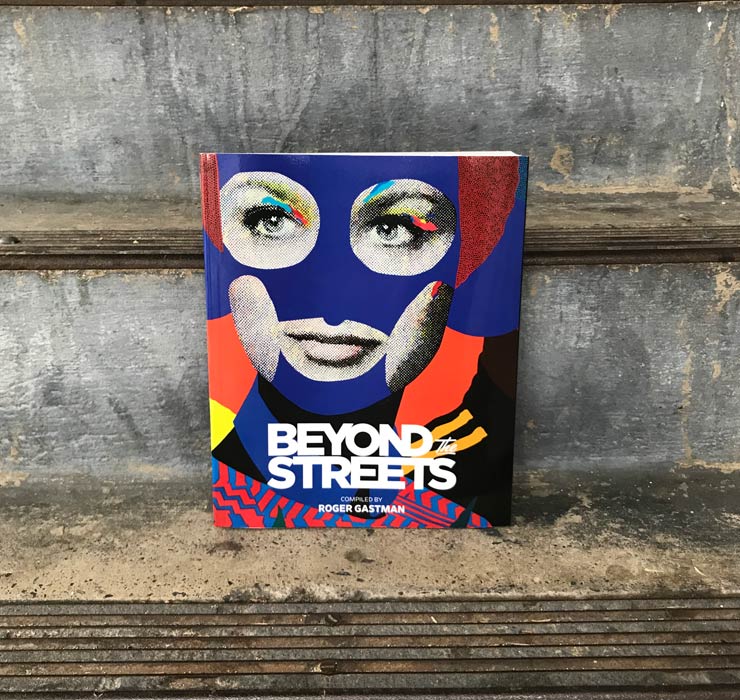
From BSA:
A steel-wheeled graffiti train with Roger Gastman at the controls roars into LA’s Chinatown for a two-month stay at this station, a 40,000 square foot warehouse that houses “Beyond the Streets.” Originating at the streets and train yards of the 1960s and 70s, this express survey carries with it 100 or so artists and writers from across the last five decades as practitioners of graffiti, Street Art, and mural painting. Somehow, everyone gets represented.
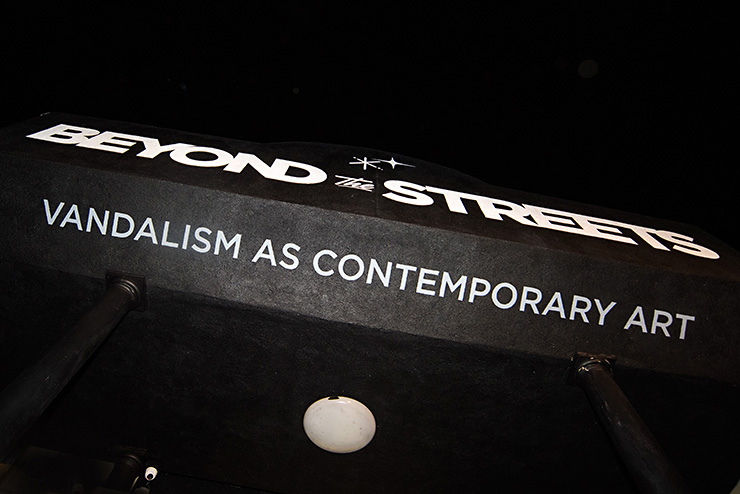
Beyond The Streets. (photo © Martha Cooper) Click HERE for more about this book.
“Canvas” Anders Gjennestad.

From BSA:
Anders Gjennestad: A Door as “Canvas”
A door as canvas. A door as canvas.
It sounds the same on the street as it does in the gallery space, and for Norwegian Street Artist Anders Gjennestad the two appear nearly identical, aside from context.
Whether he is discovering the neglected urban factory door long after the spirit of industry has roared its last turbine and reaching toward his backpack for a spray can, or he is hoisting a piece out from the pile of collected iron-bound wooded slabs in his Berlin studio, functionally each of these doors is a canvas.
Every urban explorer sees the potential of walls that are long abandoned and spoiled with rot and piss and pushed open by weeds, worn away by rain. The world is a temporary place anyway. I am only here temporarily.
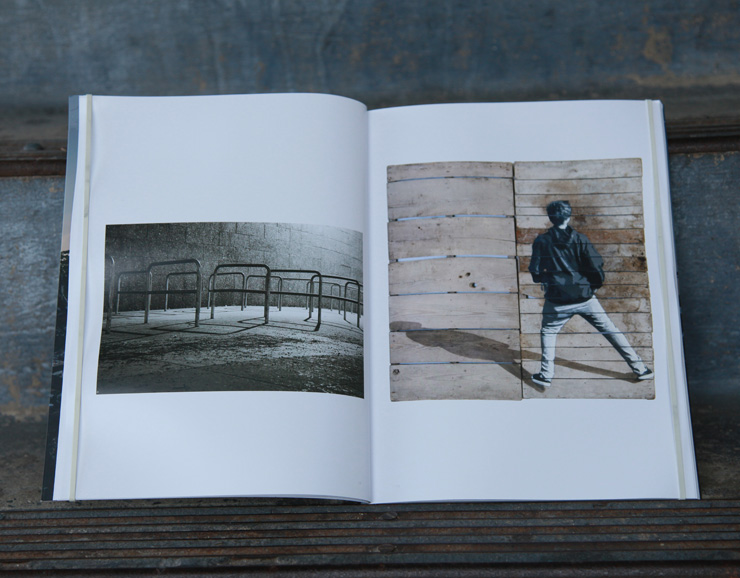
Anders Gjennestad. “Canvas”. Published by Galerie Friedmann – Hahn. Berlin 2018. Click HERE for more about this book.
“FKDL” Frank Duval.
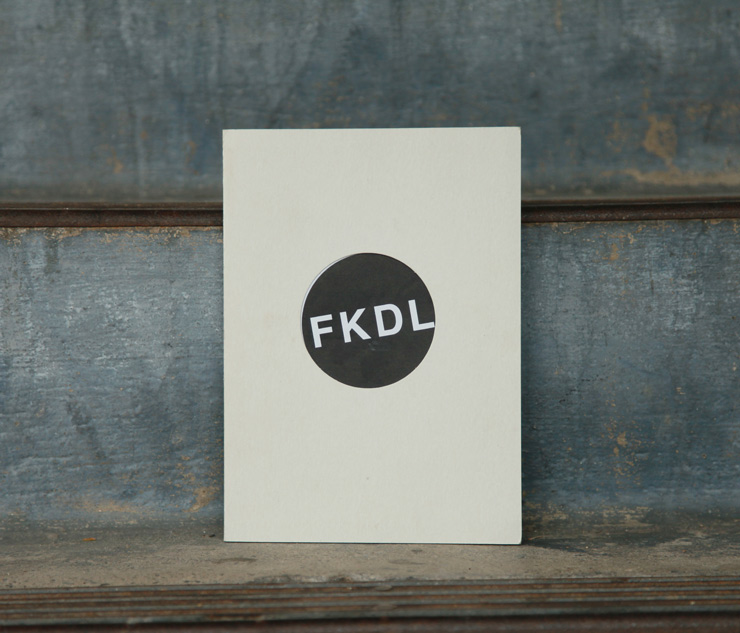
From BSA:
FKDL and the Collage of a Street Artists’ Life in a Book
As you look through this new slim volume about the Street Artist/fine artist FKDL it may strike you how much autobiography is the determinant of an artist’s path as well. It’s the tale of a teenager finding himself, finding his vocation, and eventually finding his voice on the street. When you reach the end you see that it takes a number of years and a lot of experimentation, this journey.
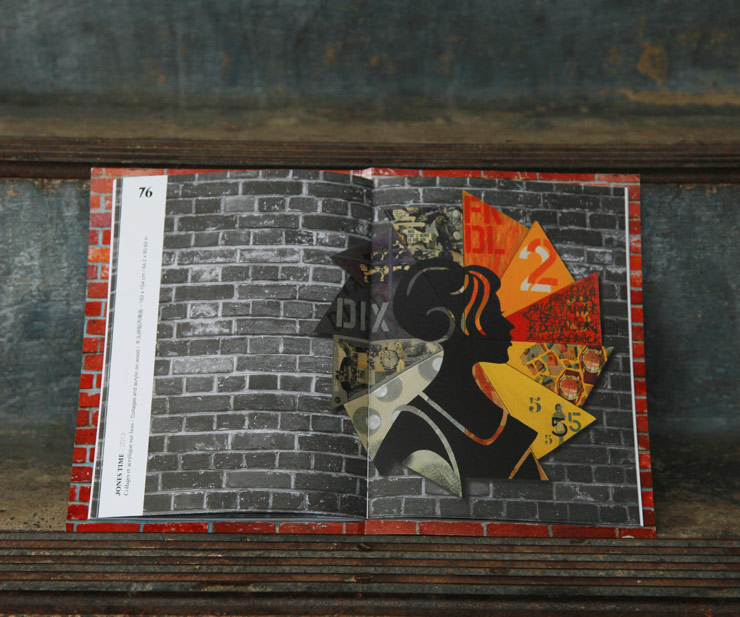
FKDL. Galiote Prenant. Choisy-le-Roi, France. 2017. Click HERE for more about this book.
“Street To Studio”, Rafael Schacter.
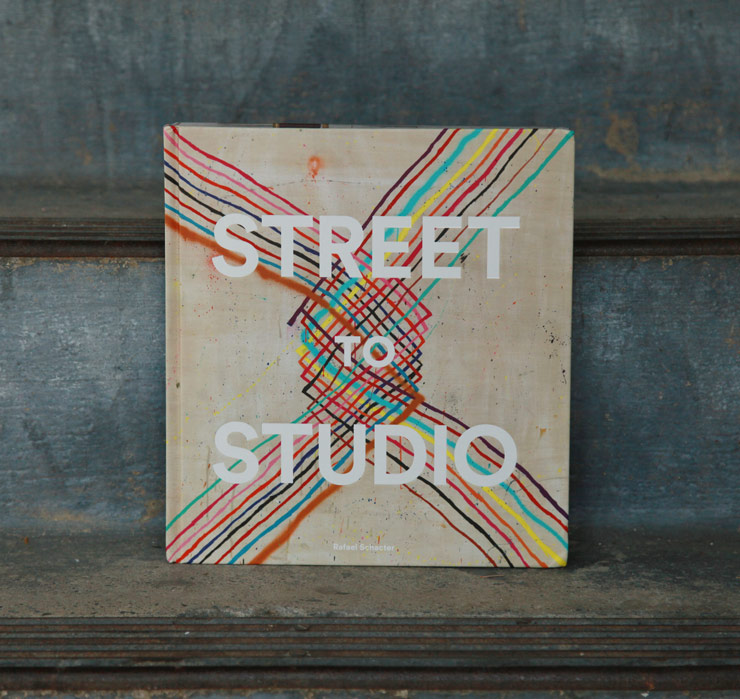
From BSA:
Rafael Schacter Investigates “Street To Studio”
“These are artists who are thus not slavishly reproducing their exterior practice within an interior realm but who are, rather, taking the essence of graffiti – its visual principles, its spatial structures, its technical methods, its entrenched ethics – and reinterpreting them with the studio domain,” says author Rafael Schacter in his introductory exposition for his book Street to Studio where he offers a unique assessment derived from his 10 years of researching the foundational, conceptual, methodological, and ethical considerations that impact the original graffiti/Street Art scene as well as where it is going.
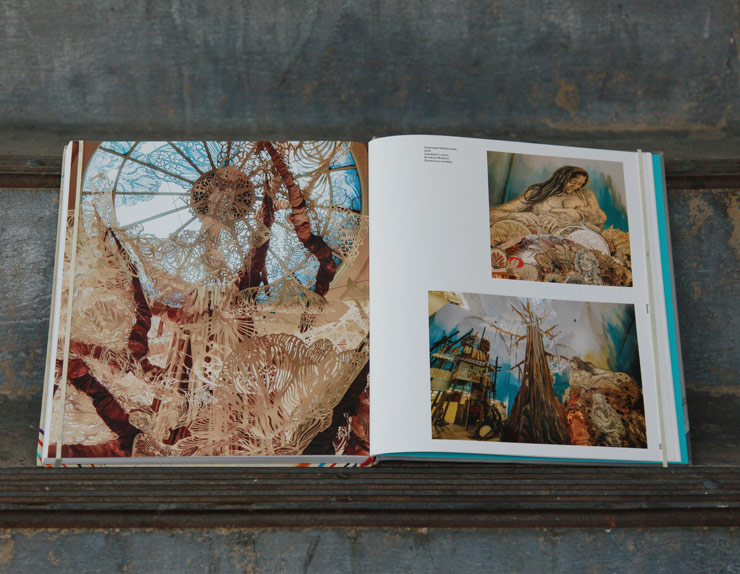
Rafael Schacter. Street To Studio. Lund Humphries Publishers. London, 2018. Click HERE for more about this book.
“Feather and Faces”, Adele Renault.
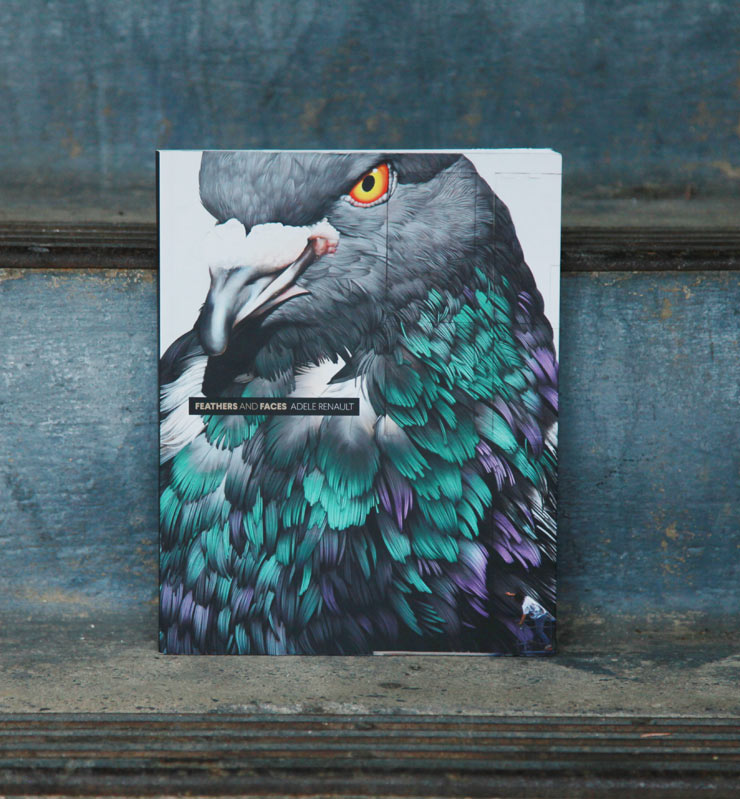
From BSA:
Adele Renault Takes Flight With a Message of “Feathers and Faces”
Street Artist/fine artist Adele Renault understands our interdependence with the birds and with each other perhaps better than many, and “Feathers and Faces” carries the message powerfully by delivering these works she has done on city streets and galleries in New York, Berlin, Amsterdam, San Francisco, Singapore, Burkina Faso, Helsinki, Moscow…
We share this city with pigeons. We look to the same environment to supply us with what we need, including food, water, shelter – depending on physical factors like as soil, air, a temperate climate, other organisms. Adele studies our feathered friends and brings them full force to the streets, and we know that here only the scrappiest survive and get to display their colors.
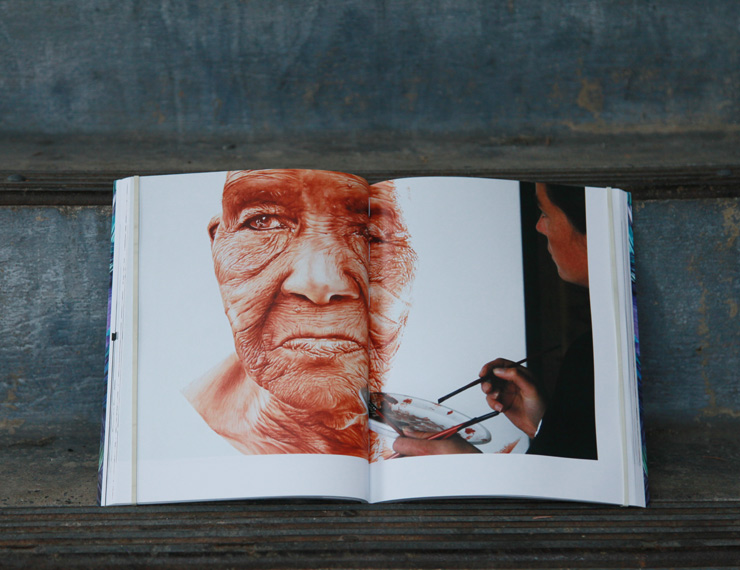
Feathers And Faces by Adele Renault was published in 2018 and is distributed in the United States and Canada by SCB Distributors. Click HERE for more about this book.
“Ex Animo”, Faith XLVII.
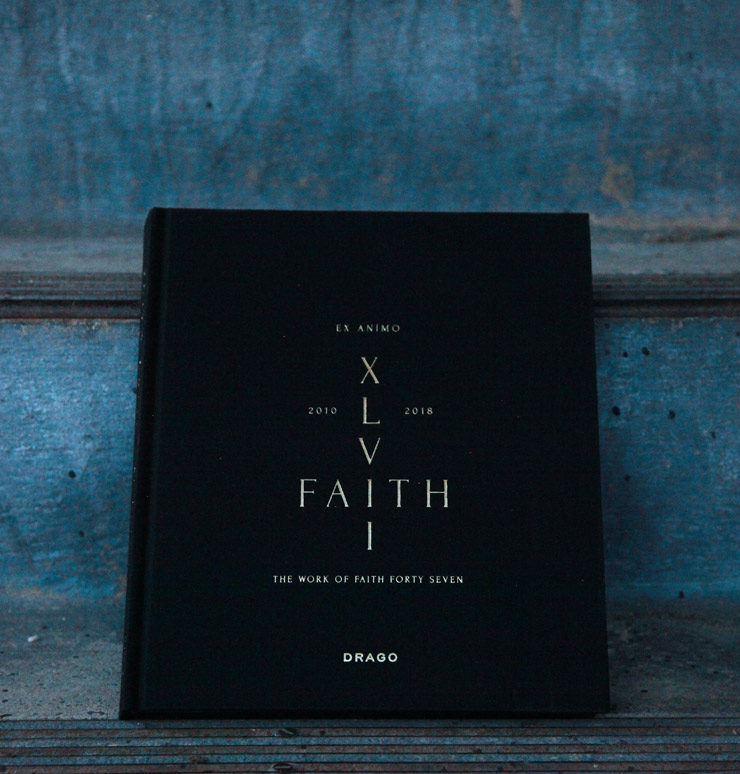
From BSA:
“Ex Animo”, Eight Years of Poetry by Faith Forty Seven
Worn workers, wild beasts, a bloom in the rubble.
Prayers of supplication and longing, racing teams of stallions and master felines of fury, the exhausted figure of a dream barely still illuminated, a wistful stage in the plundered urban landscape, or a plundered life.
This is what she does to you. As Faith IXVII leaves her stolen stanza, her massive mural in washed hues, her tributes to a moment lost in a city that would leave you to die if it had its way, she makes you make poetry.
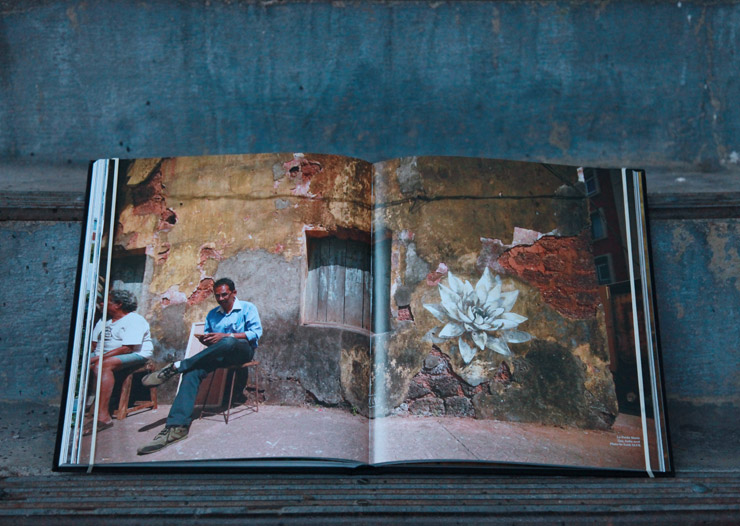
Faith XLVII. “EX ANIMO’ THE WORK OF FAITH FORTY SEVEN/ 2010-2018. Drago Publishing. Rome, Italy, 2018. Click HERE for more about this book.
“Perception”, eL Seed.
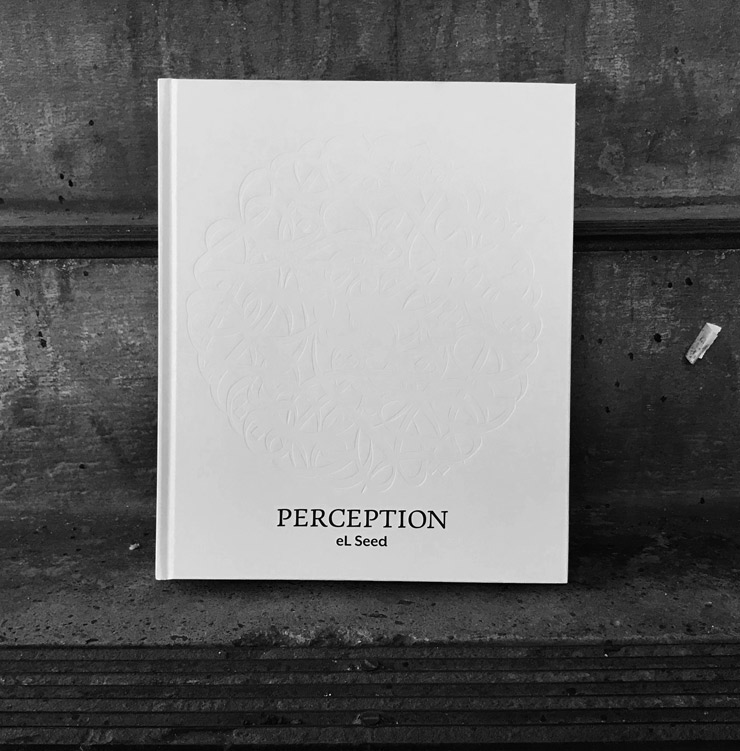
From BSA:
El Seed Illuminates Ways to See Others with “Perception”
And el Seed is the first to tell you that in this deeply personal account of his art project across fifty buildings in Mashiyat Naser, a neighborhood of Cairo over two years ago. Born of his personal need to challenge himself and to add more to his career as a respected muralist, his original concept of working in this neighborhood of 70,000 recyclers was informed by his own assumptions, perhaps of helping a community known in the city as Zabbaleen, or “garbage people”.
Over the course of the project he and his team describe through interviews and with his own diary style how their own eyes were opened. It is an incremental revelatory experience that paralleled the quote that he stylized throughout the pattern of his piece, “Anyone who wants to see the sunlight clearly needs to wipe his eyes first,” from the writings of Saint Athanasius of Alexandria, a fourth century Coptic Bishop.
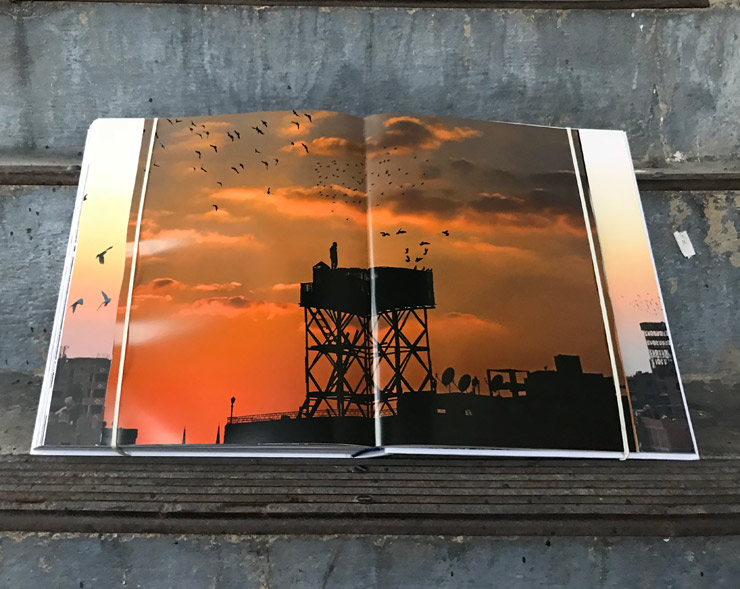
El Seed PERCEPTION Published by Point à la Ligne. Milan, Italy. 2018. Click HERE for more about this book.
“Invasion: Los Angeles”, Invader.
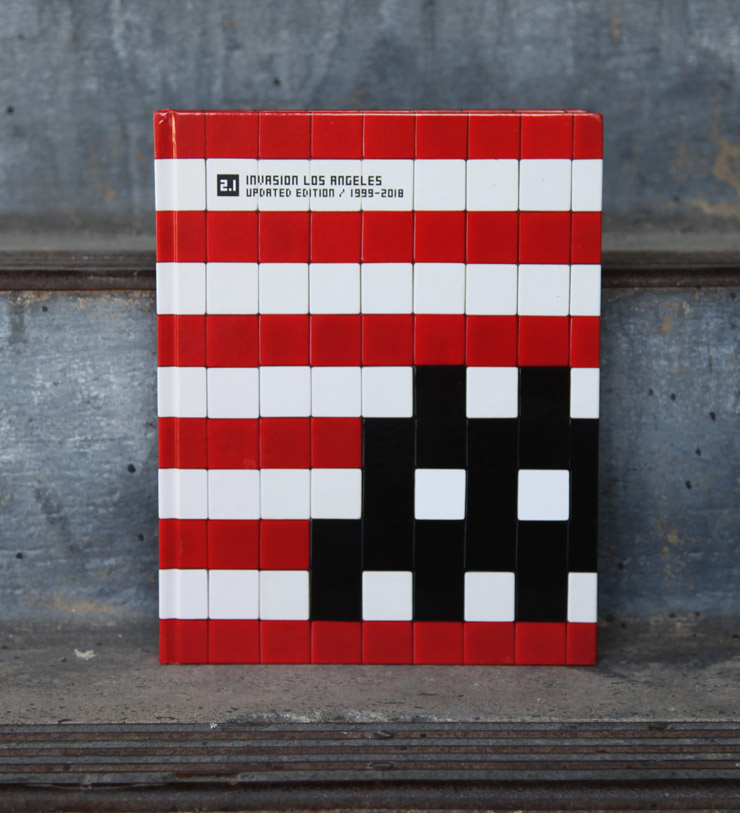
From BSA:
Invader: “Invasion Los Angeles” Book and “Into the White Cube” Exhibition
One thing that some Street Artists do when their work enters the white cube is drop the “street” from their official moniker, instead preferring to be known simply as an “artist”. The decision is possibly to rid themselves of any subtle class distinctions or otherwise negative connotations that a potential collector or curator may have with the “street artist” label.
Other artists formerly known as “Street Artists” feel limited by the title because it doesn’t include all of their new interests and their complete practice – or because the term itself has evolved in their mind and the mind of the public to mean something unfavorable that they do not like to be associated with.
When it comes to the internationally renowned Street Artist Invader, its not a consideration – the street is in his DNA. His cryptic tile-made street practice is so proliferate across the world and so much a part of the metropolis like in his hometown of Paris that his art is literally and psychically fused with the city.
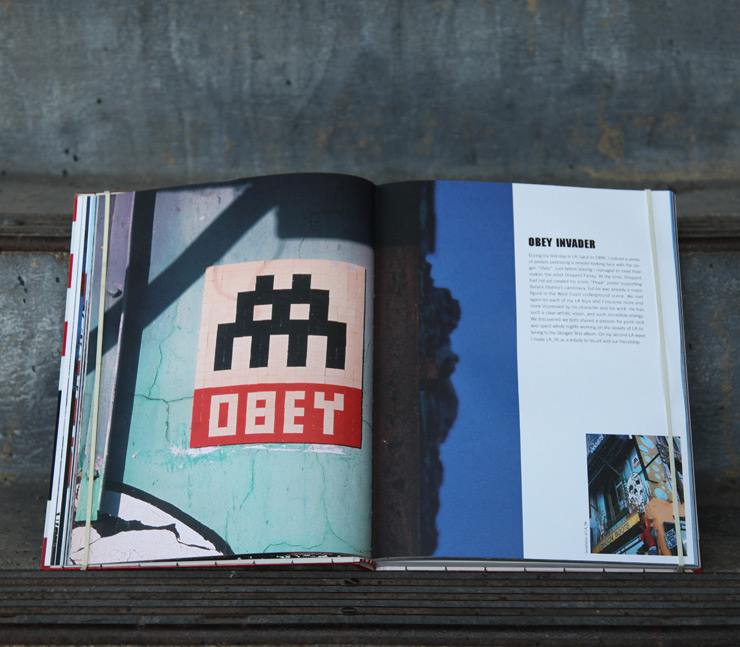
Invasion Los Angeles 2.1 / Updated Edition 1999 – 2018. A Book By Invader. Published by Control P. Editions. France 2018. Click HERE for more about this book.
“Russian Urban Art: History and Conflicts”, Igor Ponosov.
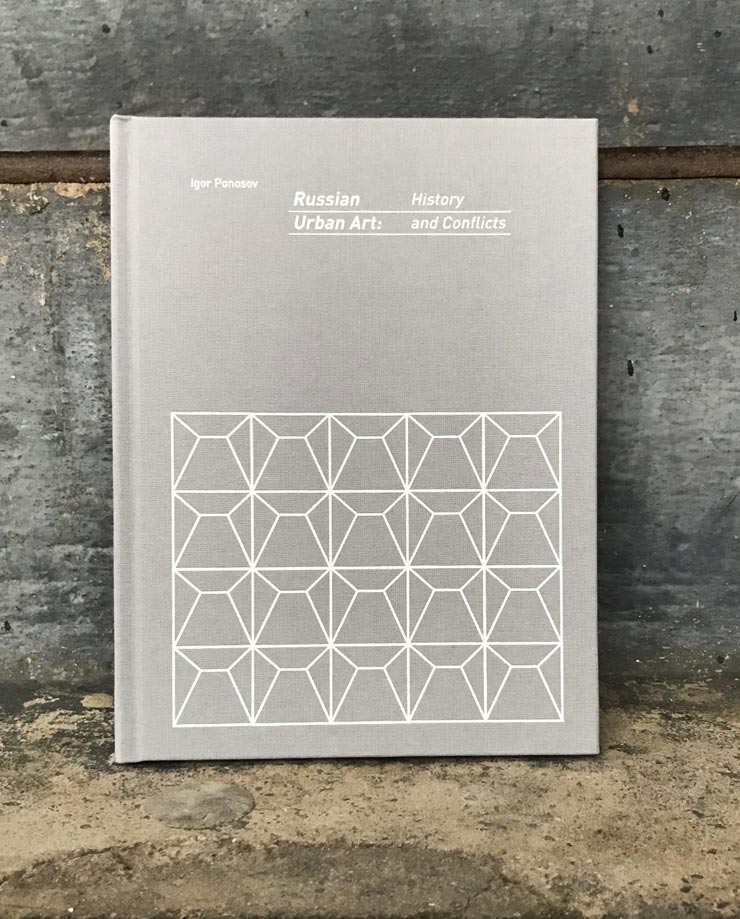
From BSA:
Igor Ponosov Enlightens with “Russian Urban Art: History and Conflicts”
An academically sourced opinion-based essay in book form that looks to art, social, economic, and geopolitical movements during the start of the 20th century to better understand the evolution of Urban Art in post-Soviet Russia, Igor Ponosov delivers a welcome reconstruction of the timeline and movements that bring urban art to this day.
With the renewed interest in public art and muralism that has erupted over the last decade in many so-called Western cities it is good to learn how the public space in Russia has been catalyzed not-only by Hip Hop and new graffiti forms from Europe but also the history of Avant-garde art movements and Soviet Muralism in Russian Urban Art: History and Conflicts.
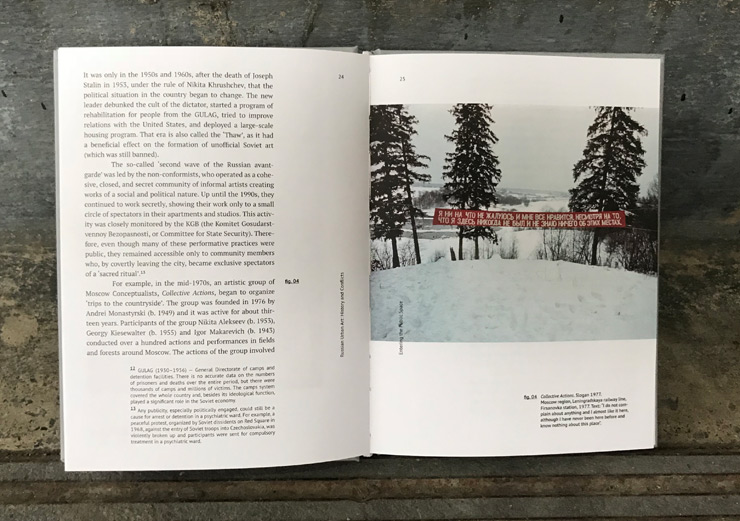
 BROOKLYN STREET ART LOVES YOU MORE EVERY DAY
BROOKLYN STREET ART LOVES YOU MORE EVERY DAY